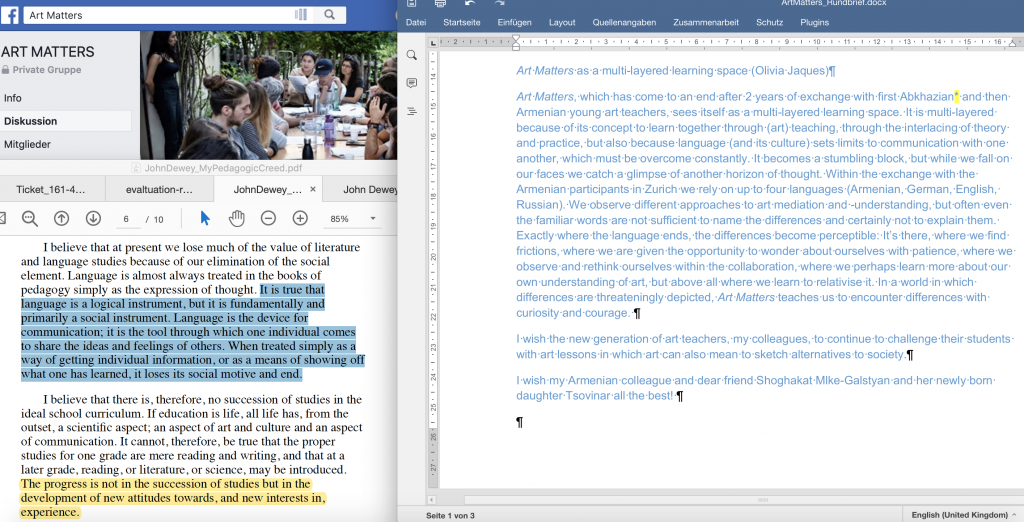
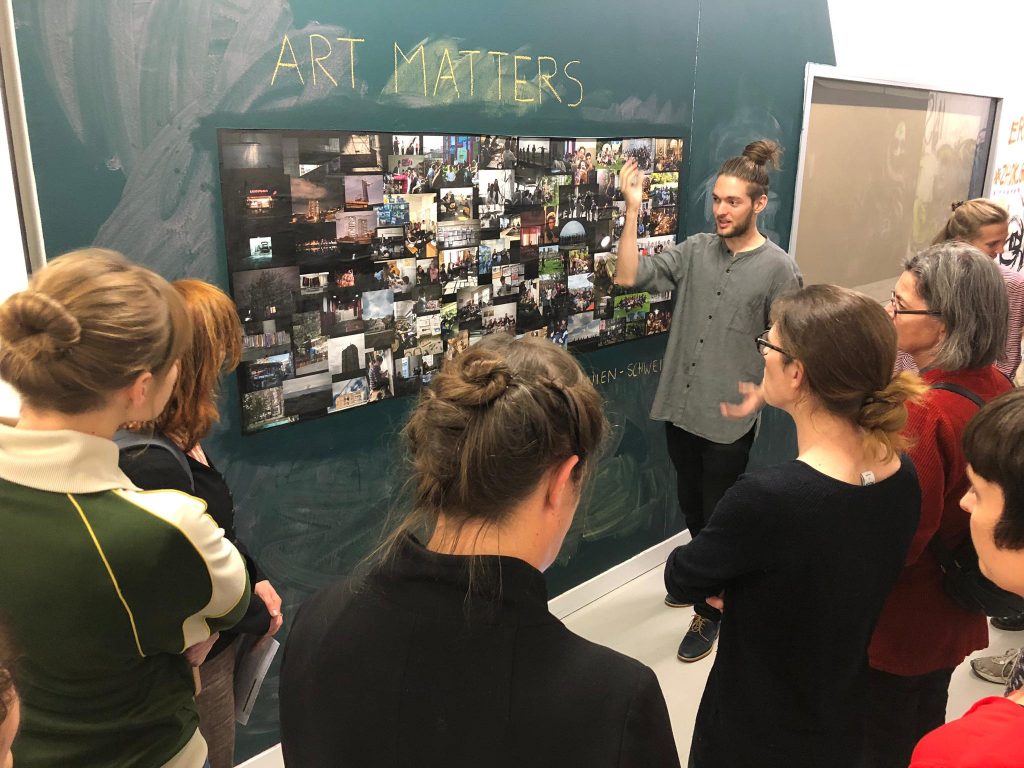
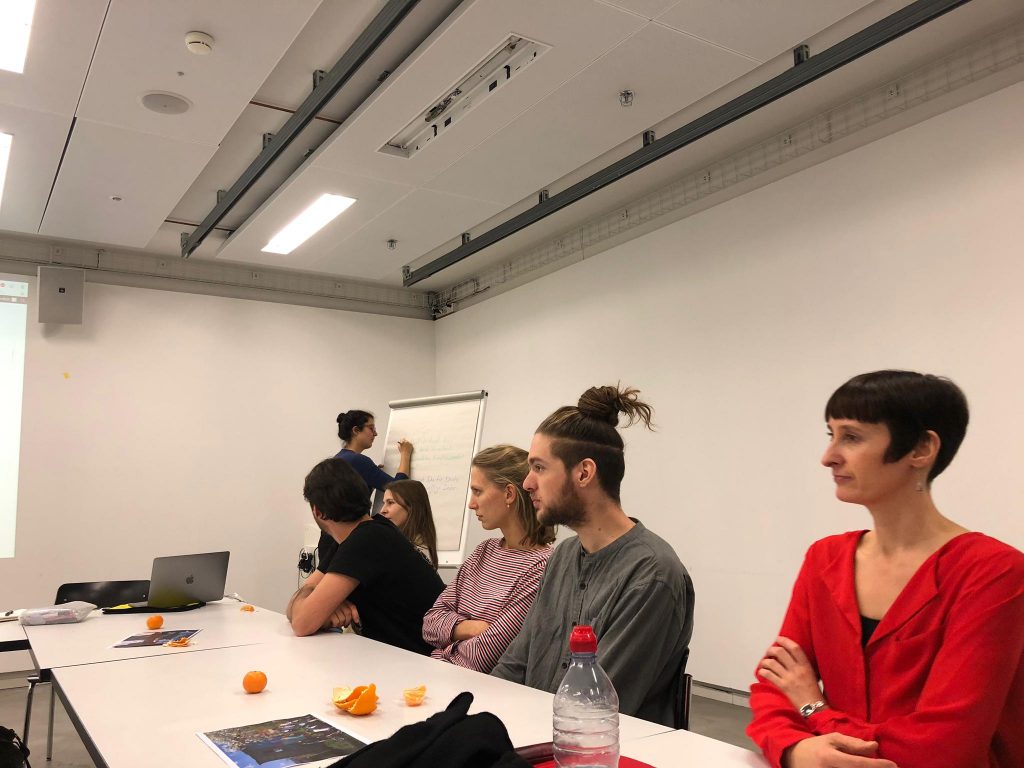
November 28th: We all, Yerevan and Zurich, met at the same time to think back, parallel to one another.
Switzerland & Southcaucasus



November 28th: We all, Yerevan and Zurich, met at the same time to think back, parallel to one another.
After so many months (4) the Armenian group arrived in Switzerland, Zurich. With a very warm welcome of our Swiss friends we got to the city and to our places.

Sunday 01.09 / Կիրակի 01.09
There was even no time to have a rest, and we were hurrying up to Les complices (our new home in Zuric) to have a welcome tasty dinner made by Olivia and friends with Swiss group.
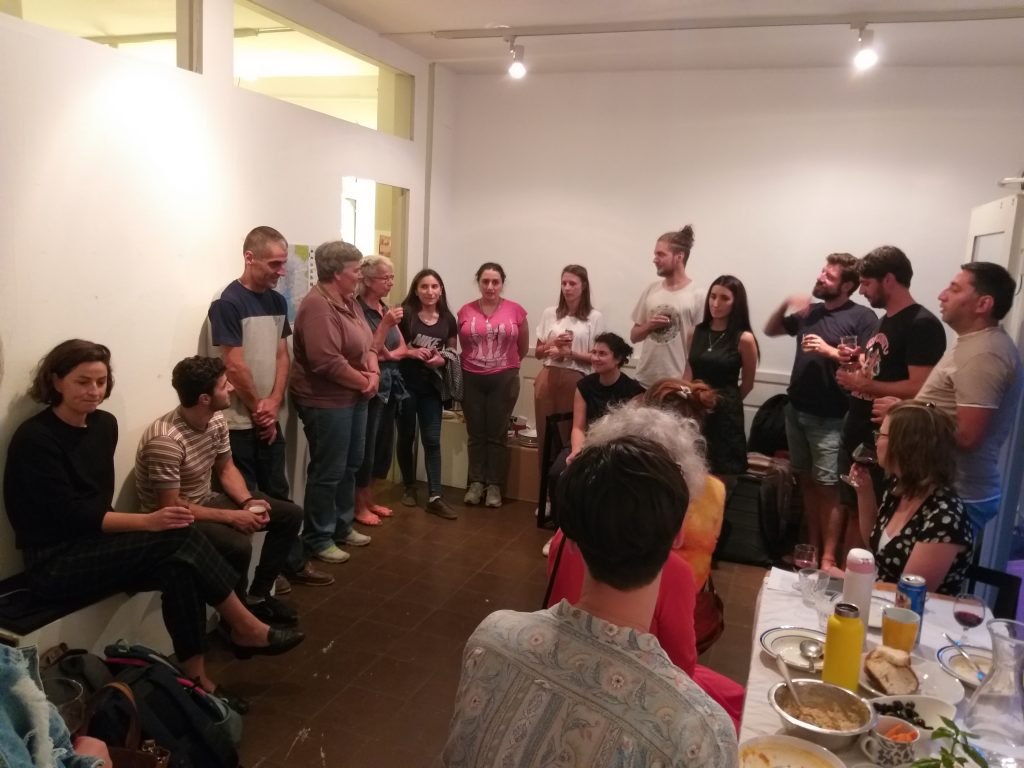
Եվ այսպես շատ ամիսներ անց (ընդամենը 4 ամիս) հայկական խումբը ժամանեց Շվեյցարիա, Ցյուրիխ։ Շվեյցարացի ընկերների շատ ջերմ ընդունելությունից հետո մենք հասանք Ցյուրիխում մեր բնակարաններ։ Չունենալով բավարար ժամանակ հանգստկ համար, արդեն շտապում էինք Լե Կոմպլիս՝ մեր նոր տունը Ցյուրիխում, Օլիվիայի և ընկերների կողմից պատրաստած համեղ ընթրիքը վայելելու։

Monday 02.09 / Երկուշաբթի 02 .09
The next morning started in ZhDK. We met the dean of Art Education faculty – Peter Thruninger, he introduced the work of their faculty and answered to our questions. Then we had some gifts from the University – sketchbooks, pencils and a journal telling some interesting things about the University. After this we had a small excursion in ZHDK, we saw the studios where students work, the bibliotheque, etc.
Հաջորդ առավոտը սկսվեց Ցյուռիխի արվեստների համալսարանում։ Մենք հանդիպեցինք համալսարանի արվեստի կրթության ֆակուլտետի դեկան Պիտեր Թրունինգերին, որը ներկայացրեց իրենց ֆակուլտետի աշխատանքը։ Համալսարանի կողմից ստացանք սիմվոլիկ նվերներ, որ կարող էինք օգտագործել հետագա պրակտիկայի ընթացքում՝ սկեչբուքներ, մատիտներ և բուհի մասին պատմող գրքույկ։ Այնուհետև մենք փոքրիկ շռջայց կատարեցինք համալսարանի ներսում, տեսանք արվեստանոցները, որտեղ սովորում են ուսանողները, գրադարանը և այլն։

What was new for us – the walls were half empty. There were some graffiti street art on them, but there were also some empty ones.
Ինչը նոր էր մեզ համար, դա այն էր, որ պատերի մի մասը լի էին նկարներով, պարզվում է ուստարվա ընթացքում ուսանողները ազատ են նկարել իրենց ստեղծագործությունները բուհի պատերին, իսկ տարվա վերջում դրանք պաատվում են սպիտակով՝ տեղ տալով նոր ուսանողների նոր գործերին։

And as we learned later each year the students paint their works on the walls and in the end of the year they clean it to give space to new students and new artworks.
Then we had the group dividing and joining session. There were already groups of two Armenians an Swiss students and here we are to find the best solutions to join them. After the suggestions of docents to groups we had a very interesting workshop session by Jean David. There were some different tables and we had to do groupworks differently in each group. Here I would like to have Jean David’s comment on it, to get the idea of the exercise better.
Ապա մենք ունեցանք խմբերի բաժանման և միացման սեսիան։ Արդեն ունեինք կազմված խմբեր՝ երկուական հայ և շվեյցարացի մասնակիցներով։ Այս տարբերակով պետք էր ընտրել ճիշտ համապատասխան խմբերը երկու երկրների միջև։ Երբ խմբերի նախնական տարբերակները հայտնի դարձան, մենք այն փորձարկեցինք Ժան Դավիթի հետաքրքիր վորքշոփի միջոցով։

The next morning already started with intense discussions within the groups about further work and plans of classes. The afternoon lunch and some reading session about the museums as contact zones took place in Rietberg Park.
Tuesday 03.09 / Երեքշաբթի 03.09
Հաջորդ առավոտն արդեն սկսեց բավական ինտենսիվ քննարկումներով խմբերի ներսում՝ հետագա գործողությունների և ծրագրերի հետ կապված։ Ռիետբերգ այգում հաճելի եղանակի հետ համատեղեցինք պիկնիկը, իսկ ապա ընթերցանություն և քննարկում՝ թանգարանները որպես կոնտակտային գոտի թեմայի վերաբերյալ։

Then we had a presentation about Art Education at Museum Rietberg. After this the guide showed us the ancient and very unique artworks from countries and nations, who brought they traditional an national pieces of art to Switzerland with the idea of saving them from several wars.
Հետո մենք մասնակցեցինք Ռիետբերգ թանգարանի կողմից կազմակերպված ներկայացմանը, թե ինչպես է այնտեղ տեղի ունենում արվեստի ուսուցումը։ Այնուհետև էքսկուրսավարի հետ շատ հետաքրքիր շրջայց ունեցանք թանգարանում, որտեղ բերված էին իրեր տարբեր երկրներից, որոնք իրենց արվեստը պահպանելու նպատակով այն հասցրել էին այստեղ, պատերազմների մեջ չկորցնելու համար։


Wednesday 04.09 / Չորեքշաբթի 04.09
On Wednesday we had our first hospitation in a Swiss school. This was an old gimnasium of Kantonsschule Hohe Promenade. The gruops observed some classes, how they take place, what is different what is similar to Armenian school system and we did some observations about this. After the official part of the morning we finally had some free time to walk in the city center of wonderful and colorful Zurich.

Չորեքշաբթի տեղի ունեցավ մեր առաջին դասալսումը Շվեյցարիական դպրոցում։ Սա մի հին ճեմարան էր՝ Հոհե Պրոմենադ անունով։ Խմբերը դիտարկեցին մի քանի դասապրոցես։ Առավել ուշադրություն դարձրինք, թե ինչ տարբերություններ ու նմանություններ կային հայկական դպրոցի հետ, և կարելի է ասել որ տարբերություններ շատ կային։ Դասալսումներից հետո վերջապես նաև մի փոքր ժամանակ ունեցանք զբոսնելու Ցյուրիխի կենտրոնական թաղամասում։
During the day we had time to think again about our lesson plans, ideas, to organise what is left etc. There was also a reading session at Artas foundation about John Dewey’s pedagogical ideas, what was suggested by David Hovhannisyan.
Օրվա ընթացքում մենք դեռ ժամանակ ունեցանք մտածելու դասը կազմակերպելու ծրագրերի մասին։ ԻՆչպես նաև Արտաս հիմնադրամում ունեցանք ընթերցանություն և տեքստի քննարկում, որի թեման էր Ջոն Դյուիի՝ Իմ մանկավարժական կրեդոն ստեղծագործությունը, որն ի դեպ առաջարկել էր Դավիթ Հովհաննիսյանը։

Thursday 05.09 / Հինգշաբթի 05.09
On Thursday we had a meeting at Kunsthalle Zurich and watched the modern art exhibition of Peter Wachtler. Then we discussed this kind of art and ideas inside with Daniel Baumann.
Հինգշաբթի հանդիպեցինք Քունսթհալե Ցյուրիխում և դիտեցինք ժամանակակից արվեստի մի քանի ցուցադրություն Պիտեր Վոչթլերի հեղինակմամբ։ Ապա դրանց մասին քննարկում ունեցանք Դանիել Բաումանի հետ։

Friday 06.09 / Ուրբաթ 06.09
On Friday we went to Autonome Schule of Zurich for immigrants. There we not only lestened to the classes, but we also took part in them as students. We learned some new German words, making sentences and elementary things. Genau 🙂 then we met the director of the school and he told us about the work in this school, about the students and teachers and how an immigrant could become a student of this school.
Ուրբաթ օրը այցելեցինք Ցյուրիխի էմիգրանտների համար նախատեսված Աուտոնոմե շուլե՝ ինքնավար դպրոց։ Այստեղ մենք ոչ միայն դասալսում անցկացրինք, այլև մասնակից եղանք դասերին որպես աշակերտներ․ սովորեցինք գերմաներեն որոշ բառեր, պարզ նախադասություններ և այլն։ ԱՅնտեղ նաև հանդիպեցինք դպրոցի տնօրենին, որը մեզ ներկայացրեց դպրոցի աշխատանքը, թե ինչպես են աշակերտները դիմում այստեղ ուսանելու համար և թե ինչպես են համակարգվում աշխատանքները։

But what is Friday, without a Friday night? Thanks to our Swiss friends we had a wonderful evening with drinks and national Swiss food at Les complices.

Բայց ինչ ուրբաթ առանց ուրբաթ գիշերվա․․։ Շնորհիվ մեր շվեյցարացի ընկերների հաճելի երեկո ունեցանք ազգային շվեյցարական ուտեստներով և խմիչքով լի։

“Free” Saturday 07.09 / “Ազատ” շաբաթ 07.09
Finally~ First free day, and then you realize how much you have to do still. Shopping, walking in the city, again shopping and Museum Night in Zurich. But before Museum night, we had an adventure even during shopping at Coop City. They almost wanted to arrest us, as they thought we were thieves :))) After an hour or so, when they checked everything we got our “prizes” A Mercy for each of us!
Վերջապես՜․․ առաջին ազատ օրը, և ապա դու գիտակցում ես, թե դեռ ինչքան բան է մնացել, որ պետք է անել, տեսնել, գնումներ կատարել և էլի գնումներ։ Իսկ երեկոյան մեզ սպասում էր Ցյուռիխյան մի հիշարժան գիշեր՝ Թանգարանային գիշեր։ Բայց մինչ այդ վերհիշենք մեր Կոոպյան արկածը։ Խանութում մեզ քիչ էր մնում ձերբակալեին, որովհետև շփոթել էին գողերի հետ։ Իսկ մի ժամ չանցած մեզ ներողություններով և “մերսի” շոկոլադներով բաց թողեցին՝ գիտակցելով իրենց մեղքը։ Հաղթանակած լուսանկարը՝ ստորև։

Theeen, the long night of Museums begins, but I guess here words are not neccecary, just some pictures we did…
Ապաա․․․ Երկար թանգարանային գիշերը սկսվեց, բայց կարծում եմ այստեղ բառերն ավելորդ են, ընդամենը մի քանի լուսանկար․․․



Adventurous Sunday 08.09 / Արկածային 08.09
To be honest, after getting home 2 at night you have only one and a half hour to sleep antil nect day… for starting the trip to Sunny Milano. Very unfortunately only two of us dared to go and have an interesting, full and hot day there, while the others were sleeping in very rainy Zurich 😛
Անկեղծ ասած գիշերը երկուսին տուն հասնելուց հետո ընդամենը մեկուկես ժամ ունեինք հաջորդ օրվան պատրաստվելու և քնի համար․․․ քանի որ որոշել էինք մեկնել Միլան։ Ցավոք սրտի վեց համարձակներից միայն երկու “մահապարտ” վերջին պահին չփոշմանեցին ու գնացին Միլան, իսկ մնացածը մնացին անձրևոտ ու սառը Ցյուրիխում՝ տաքանալու և կիրակի օրով գնումների գնալու։

Monday 09.09 / Երկուշաբթի 09 .09
So after a very intense and full week we began the new working week at school in Bulach. There we had a meeting with the director of the school Senn Priska. She told about the school, the subjects they have, the regions from where there are children in this school and this kind of information. Then we had an excursion in school.

Այսպես շատ հագեցած շաբաթից հետո սկսեցինք նոր աշխատանքային շաբաթը, այս անգամ արդեն Բյուլախի դպրոցում։ Այստեղ հանդիպեցինք դպրոցի տնօրեն Սեն Պրիսկայի հետ։ Նա պատմեց դպրոցի աշխատանքների մասին, թե որ շրջաններից երեխաներ են գալիս այս դպրոց, առարկաները, որ անցնում են և արվեստի դասաժամերի մասին։ Ապա մենք փոքրիկ էքսկուրսիա ունեցանք դպրոցում։

Tuesday 10.09 / Երեքշաբթի 10.09
We had our first lessons done on Tuesday. Each group finished its preparations and went to classes already ready to enjoy teaching in not a very usual way.
As for me it was a challenge to teach a) In Switzerland, b)In English, c) pupils whos native language is not English too, d) In high school and 130 minutes lesson, and this list can last very long.
It’s a pity we didn’t have a chance to observe each others lessons by groups, otherwise I could also have an opinion about others’ lessons too. But I can say that I had a very unforgettable 130 minutes, from which I take many things with me and I’m sure, Im not the only one with huge impressions.

Առաջին անգամ Շվեյցարիայում դասավանդեցինք երեքշաբթի օրը Բյուլախի դպրոցում։ Ամեն խումբ արդեն ավարտել էր նախապատրաստական աշխատանքները ու պատրաստ էինք մտնել դասարաններ ու վայելել դասավանդումը մեղմ ասած ոչ սովորական պայմաններում։
Ինչ վերաբերում է ինձ ա, շատ պարտավորեցնող էր ա․ դասավանդելը Շվեյցարիայում, բ․ օտար լեզվով, գ․ աշակերտներին, որոնց մայրենի լեզուն ևս անգլերենը չէ, դ․ ավագ դպրոցում և 130 րոպե տևող դասին, և այս ցուցակը կարելի է դեռ երկար շարունակել։
Ցավալի է, բայց չկարողացանք դիտարկել մեկմեկու դասեր, հակառակ դեպքում կկարողանայի կարծիք հայտնել նաև ուրիշների դասերի մասին։ Սակայն կարող եմ ասել, որ ապրել եմ անմոռանալի 130 րոպե, որոնցից ինքս տանում եմ շատ բաներ մտածելու, և վստահ եմ՝ միայնակ չեմ, որ հեռանում եմ ահրելի քանակությամբ տպավորություններով։
Wednesday 11.09 / Չորեքշաբթի 11.09
Wednesday morning started with an interesting input from Օlivia and Henrich about feedback and Feedback methods. This workshop wen on a very dynamic and unusual way from gossiping in groups to gossiping in a big group. It’s not enough to say that we gained a lot of information from this session.
Then we listened to Sevada’s input on characteristic for the open air painting practice and methodology. This was kind of new for Swiss students, because it included some academic way of paintings and ideology of studying arts. But it’s usual lesson for Armenian students.

Չորեքշաբթի առավոտը սկսվեց Օլիվիայի և Հենրիխի հետաքրքիր սեսիայով՝ ֆիդբեքի, այն է առձագանքի և դրա մեթոդների մասին։ Այս սեսիան շատ դինամիկ և արագ ընթացավ՝ սկսած փոքր խմբերում քննարկումներից մինչև կարծիք հայտնելը մեծ խմբում։ Քիչ է ասելը, որ մենք շատ նոր բաներ սովորեցինք ու ինֆորմացիա ստացանք ֆիդբեքի մասին։
Ապա լսեցինք Սևադայի դասախոսությունը բացօթյա նկարչության բնույթը, կիրառումը և մեթոդոլոգիան թեմայով։ Սա կարելի է ասել նոր բան էր շվեյցարացի ուսանողների համար, որովհետև իր մեջ էր պարունակում կերպարվեստի ուսուցման ակադեմիական ձևեր, բայց նաև շատ ծանոթ էր հայ ուսանողներին։
In the evening we had David’s “Sketch painting . Speciality and importance” input and a sketching session at the roof of ZhDK . Then we went to Jean’s place to have barbecue and a nice evening in the garden.
Երեկոյան Դավիթը ներկայացրեց ճեպանկարի յուրահատկությունները ու կարևորությունը թեմայով դասախոսությունը և գործնական դասընթաց ունեցանք արվեստների համալսարանի տանիքում։ Այնուհետև ուղևորվեցինք դեպի Ժոնի այգի՝ հաճելի ընթրիք ու երեկո անցկացնելու։
Thursday 12.09 / Հինգշաբթի 12.09
Again teaching all day long. This time already more progressed and idealized lessons, plans and processes. At the end of the day we had an interesting discussion with Dagmar and Priska at school. We discussed our practise here and what we gave and took from this experience.

Այսօր նույնպես դասավանդման օր էր։ Օրվա վերջում հետաքրքրիր քննարկում ունեցանք Դագմարի և Պրիսկայի հետ, թե ինչ տվեց մեզ այս պրակտիկան դպրոցում և ինչ տվեցինք մենք դպրոցին։
Friday 13.09 / Ուրբաթ 13.09
Morning started at ZhDK with feedback and documentation session. We discussed the internship, the possible ways of continuing this platform. The result was that we decided to create an online platform in this case a facebook group in which we will add interesting materials and share it with our friend each month and to be in touch.
Առավոտը սկսվեց Ցյուրիխի արվեստների համալսարանում ֆիդբեքի և փաստաթղթավորման սեսիայով։ Քննարկեցինք փոխանակման ծրագիրը և շարունակման հնարավոր տարբերակներն ու դրանց բնույթը։ Կանգ առանք արցանց հարթակ ստեղծելու մտոի վրա, որն այս դեպքում ֆեյսբուքյան խումբն էր, և որտեղ ավելացնելու ենք հետաքրքիր նյութեր ամեն ամիս ու կիսվելու նորություններով։
Then we participated in a game organised by ZhDK for international students called Lucy. The aim of the game was to find some places in the city and to get to know it well, so it was a kind of surprising that we are playing this game only when were just to finish our exchange program, but anyway we enjoyed it.
Հետո մասնակցեցինք համալսարանի կողմից կազմակերխպված՝ օտարազգի ուսանողների համար նախատեսված խաղին՝ Լյուսի անվանումով։ Խաղի նպատակն էր գտնել քաղաքում տարբեր վայրեր ու սկսել այն լավ ճանաչել, բայց հետաքրքիր էր, որ մենք խաղացինք այն միայն վերջին օրերին, որովհետև արդեն լավ ծանոթ էինք քաղաքին, բայց այնուամենայնիվ մենք վայելեցինք խաղը։
Theeeen a great pizza party took place at Simon’s house. We did everything there, making pizza, exploring Simon’s tween, dancing, drinking, playing, singing anything possible and in the and a very emotional moment, we had our surprise gifts from our Swiss friends prepared personally. This was a really wonderful day. So I only can say thank you for the emotions, I remember as if it was yesterday.

Հետոոո մի ուրիշ երեկո ունեցանք Սիմոնի տանը։ Այնտեղ մենք բառացի ամեն ինչ արեցինք․ պատրաստեցինք պիցցա, բացահայտեցինք Սիմոնի երկվորյակին, պարեցինք, խմիչքներ փորձեցինք, խաղացինք, երգեցինք ամեն ինչ, ինչ հնարավոր էր և վերջում մի շատ զգացմունքային պահ նվիրեցին մեր շվեյցարացի ընկերները՝ նվիրելով անակնկալները, որ պատրաստել էին ամեն մեկի համար առանձնահատուկ և անվանական։ Այս ամեն ինչի համար միայն կարող եմ շնորհակալություն ասել, որ այս պահը հիշում եմ այնպես, կարծես այն երեկ էր։
Saturday 14.09 / Շաբաթ 14.09
This was last day we spent in Switzerland, and the organisers had done everything for us to spend it wonderfully.

We had a stunning excursion to a medieval Swiss city Lucerne and then a Modern Art Performance festival at Giswil town. I’m sure everyone was very impressed by a not very ordinary festival.

And of course, I don’t forget to mention that we found some time to swim in a clean and beautiful mountain lake and enjoy the sightseeing peisages of Switzerland’s countryside.

Սա մեր վերջին օրն էր Շվեյցարիայում և կազմակերպիչներն արեցին ամեն ինչ, որպեսզի այն անցնի հրաշալի մեզ համար։ Փոքրիկ էքսկուրսիա ունեցանք գեղատեսիլ միջնադարյան շվեյցարական Լյուցերն քաղաքում ապա ուղևորվեցինք Գիսվիլ Գյուղակ՝ Ժամանակակից արվեստի փերֆորմանսների փառատոնին մասնակցելու։

Վստահ եմ, բոլորս շատ տպավորված էինք այս ոչ շատ սովորական ֆեստիվալից։

Եվ իհարկե չմոռանամ նշել, որ ժամանակ գտանք պաղ ու ջինջ լեռնային լճակում լողալու ու վայելելու Շվեյցարիայի գյուղակների գեղատեսիլ բնանկարները։
Sunday 15.09 / Կիրակի 15.09
Travelling back. A sad moment but we appreciate it so much that our Swiss friends and the translators found time to come to the airport and say goodbye to us.
It’s another thing to express our thanks to the translators who became friends to us besides helping to communicate.

Հետ վերադարձ։ Տխուր պահ էր, սակայն մենք շատ ենք գնահատում այն, որ շվեյցարացի ընկերները ու թարգամնիչները ժամանակ գտան օդանավակայան գալու և մեզ ճանապարհելու համար։
Առանձին շնորհակալության են արժանի թարգմանիչները, որոնք, ոչ միայն մեզ օգնում էին շփվելու հարցում, այլ նաև ընկերացան մեզ հետ ծրագրի ընթացքում։
The topic of our lesson is “figurative painting”. We plan to teach a spontaneous, sketchy and experimental way of painting. The goal is to experience painting as something free and creative. We don’t want to take the traditional, naturalistic and academic approach at painting humans but instead want to use different short exercises to challenge the students.
In our double-lesson we are going to work on the topic “self-portrait painting”. We plan on starting with short and experimental exercises, in which we try out different approaches to painting a self-portrait. The goal is to get the students started and let them experience the many possibilities of painting. After these short exercises, we will discuss a self-portrait of Paul Gauguin. The discussion will lead the students to ideas for an own self-portrait. In the second half of the double-lesson they will then get time to work on a personal, expressive self-portrait, showing their wishes, feelings or stories.
Estella, Hripsime, Fabio, Bastian
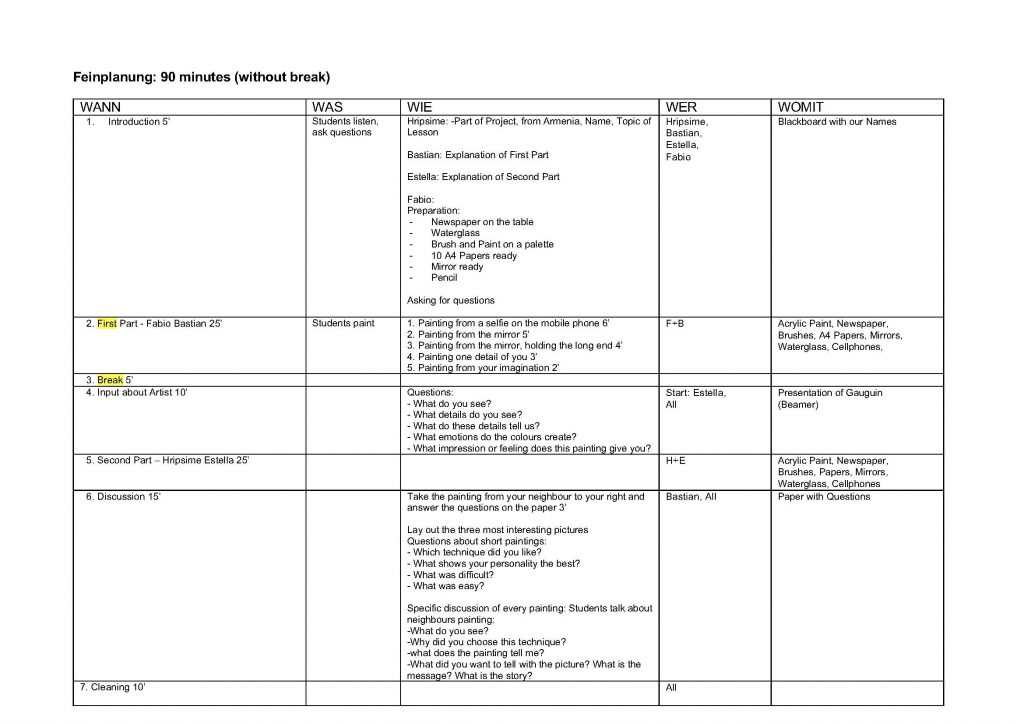
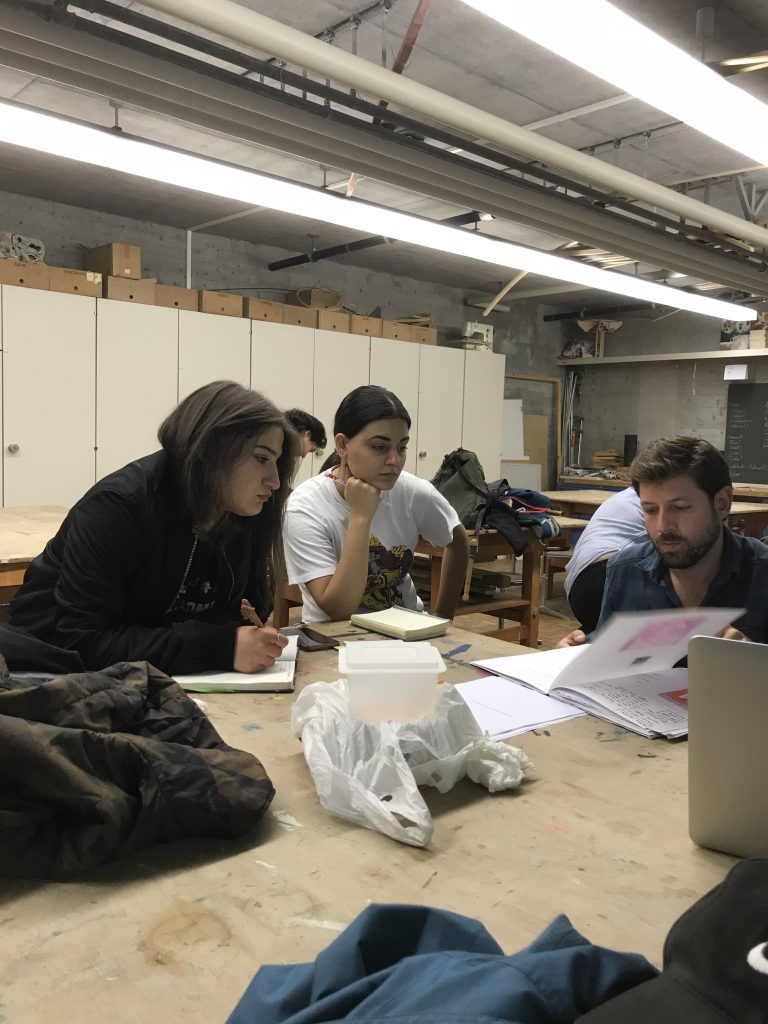

During our lesson we want the students to observe objects in different ways and transform them into drawings. In this transforming process a lot of things are happening. They receive sensual stimulus in the brain, which are converted into some kind of an output. Therefore, drawing is also always a form of translation of what we see, hear and feel. To enhance this sensual experience, we selected objects that are especially appealing when it comes to shapes, surfaces and material (styrofoam, technical tools, organic shapes etc.).
We start our lesson with three smaller exercises in which the students should explore their senses through observation and drawing. In the second half of the double lesson they will take their time to develop and create something out of their previous observations into an association.
With our exercises, we want to improve the students ability to observe with their senses, in order to realize, that an objects has more characteristics then they would think.
During our lesson we want the students to observe objects in different ways and transform them into drawings. In this transforming process a lot of things are happening. They receive sensual stimulus in the brain, which are converted into some kind of an output. Therefore, drawing is also always a form of translation of what we see, hear and feel. To enhance this sensual experience, we selected objects that are especially appealing when it comes to shapes, surfaces and material (styrofoam, technical tools, organic shapes etc.).
We start our lesson with three smaller exercises in which the students should explore their senses through observation and drawing. In the second half of the double lesson they will take their time to develop and create something out of their previous observations into an association.
With our exercises, we want to improve the students ability to observe with their senses, in order to realize, that an objects has more characteristics then they would think.
Aim for our lesson
Artistical Expression:
Find new ways for perceiving an object. The lesson is about observation and they learn to think in different perspectives and with different senses. Every picture we create is a translation of sensual stimulations. And this process contains interpretation and deciding on how you bring them onto material.
Methods, Techniques, Strategies:
Develop a sensitivity for shapes, materials and surfaces. Paint with Gouache. Learn about the science of colors, especially Complementary Color Combinations. Recognizing shadows and lights in a object and transforming them into colors.
Analytical Reflexion,
Awareness, that everything we create after an image or an object is always a translation and interpretation of itself
Astghik, Raya, Simon, Lysanne

Our aim is to open up creativity in collaborative group drawings, to use them as inspiration for their own works. We will start with more playfull and collaborativ exercices like „Cadavre Exquis“ a slowly make the drawings longer, preciser and in the end single works where they can integrate their previous experiences. We want to show them in this process artists that work in a similiar way and also share their approaches for finding new forms and ways to visualise something. Our exercises are about combining four different objects into a drawing as one object or composition.
Jean-David, Nicole, Sevada, Marine
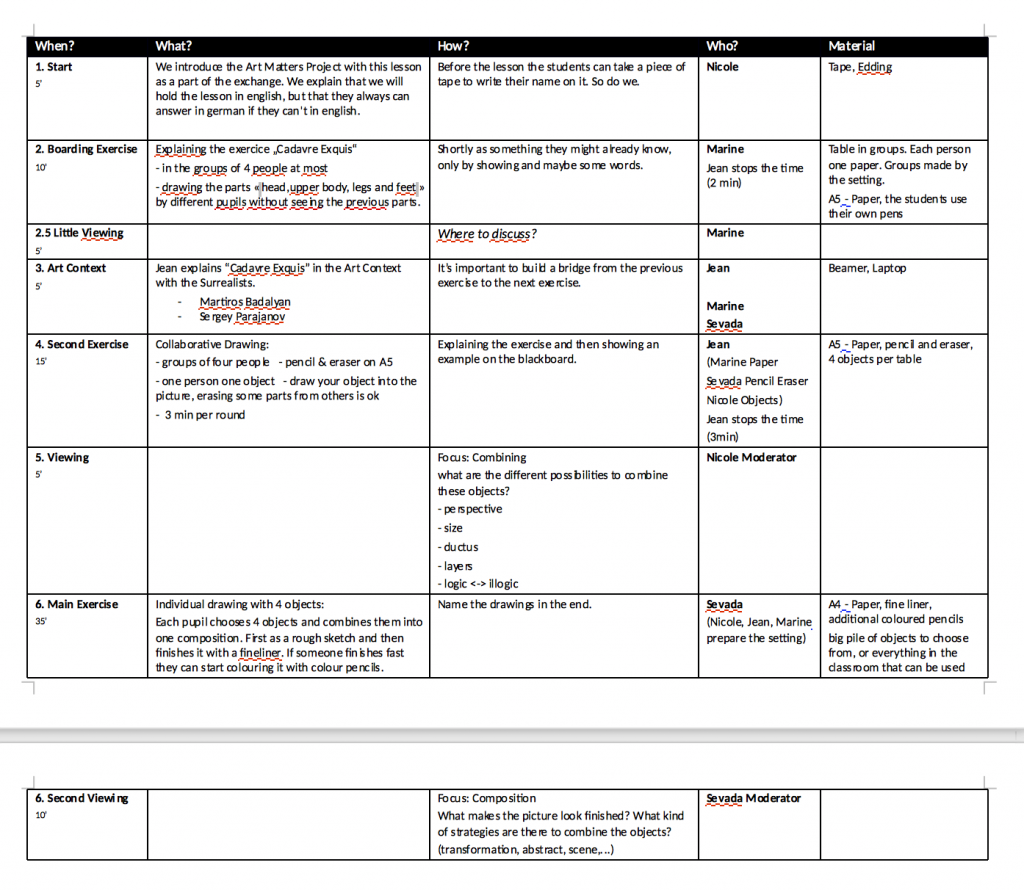
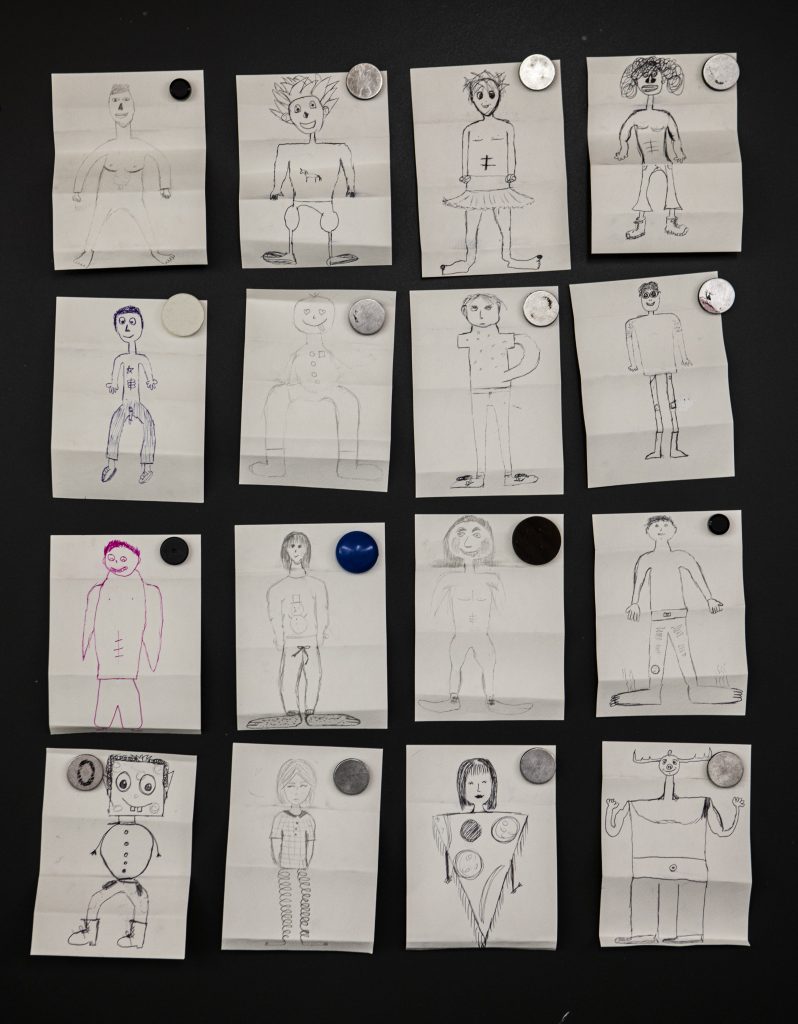
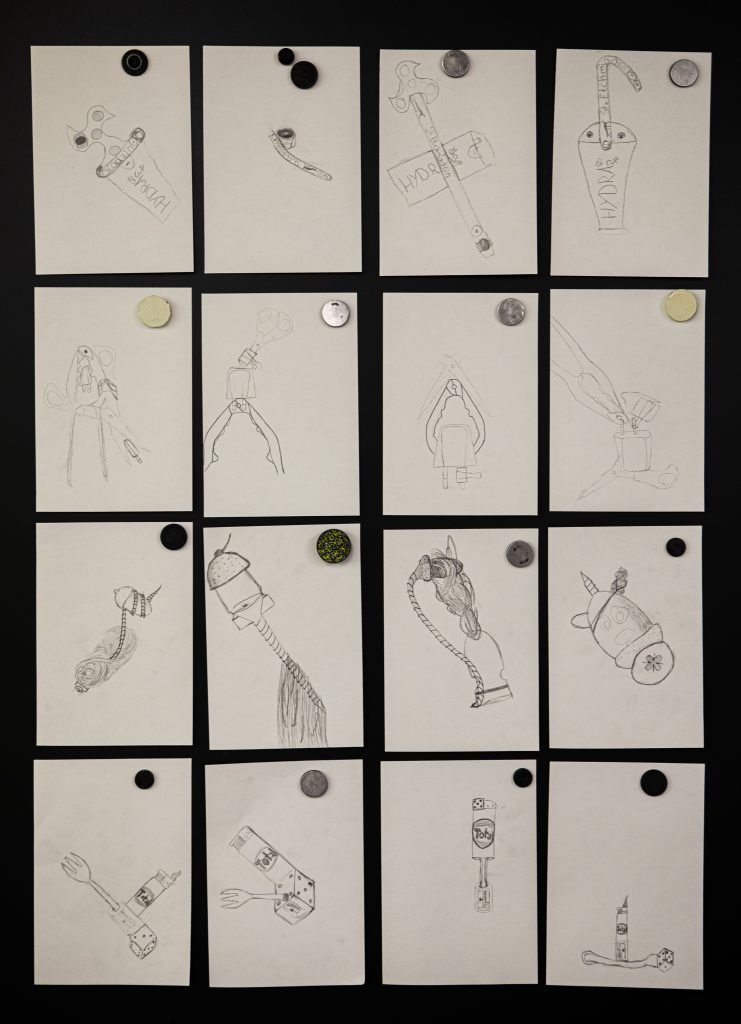
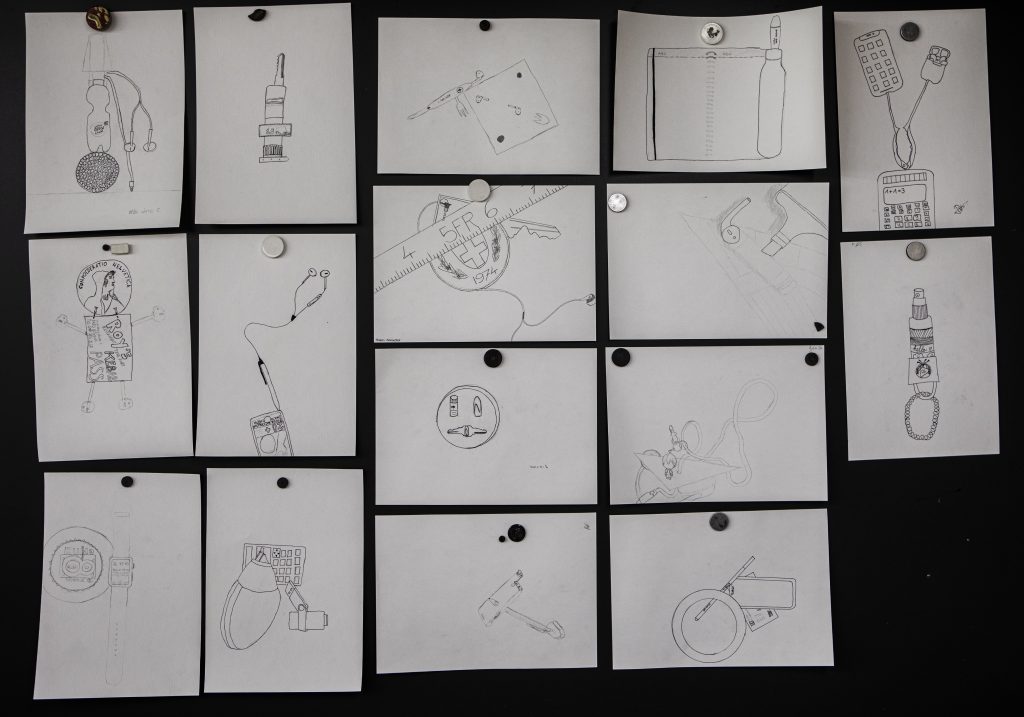
Monday, 02.09.2019
Toni Areal
Workshop with Jean-David
Tuesday, 03.09.2019
Picknick at Museum Rietberg
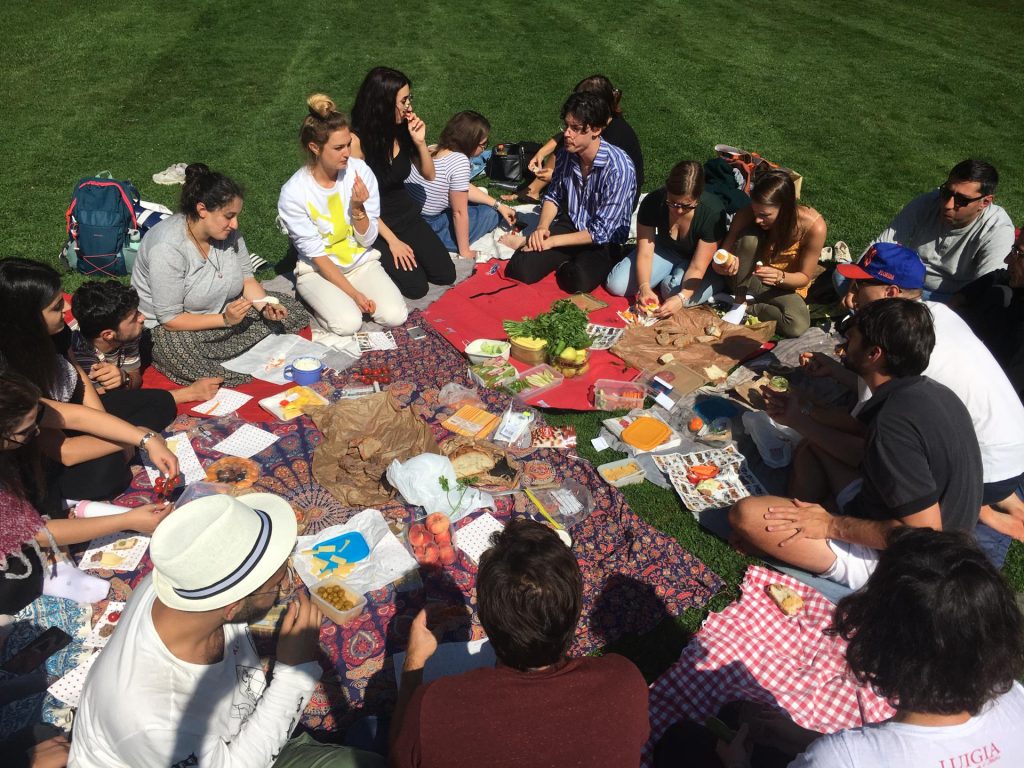
Reading: Museum as Contact Zone (James Geertz)
Discussing: Provenienzforschung / provenance research
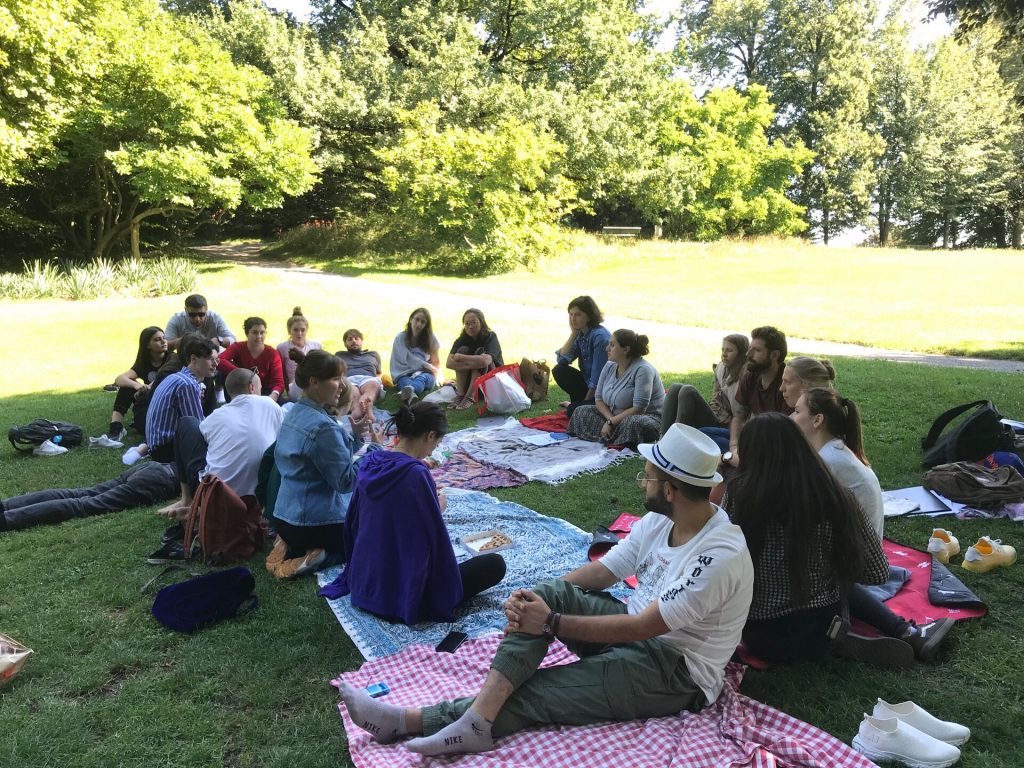
Guided Tour in the Collection of Museum Rietberg
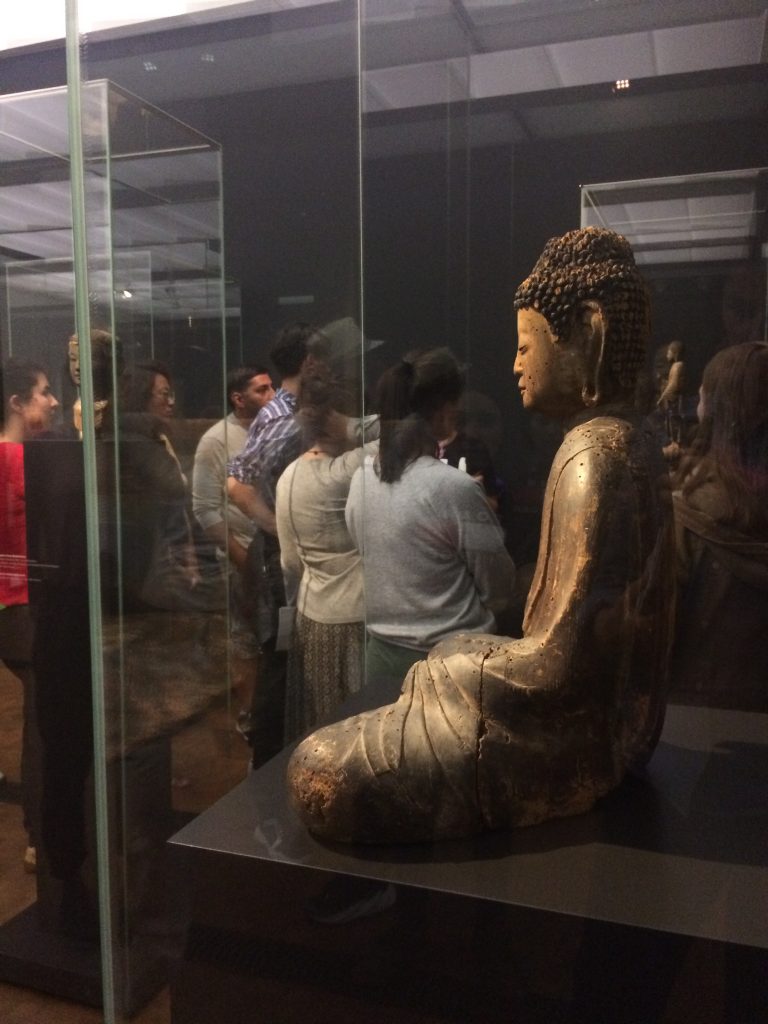

Discussion with Anna Schürch: Contact Zone Zürich – Jerewan. What do we learn in this exchange about art pedagogy? How does working together and thinking about art pedagogy supports our encountering?
Wednesday, 04.09.2019
Preparations
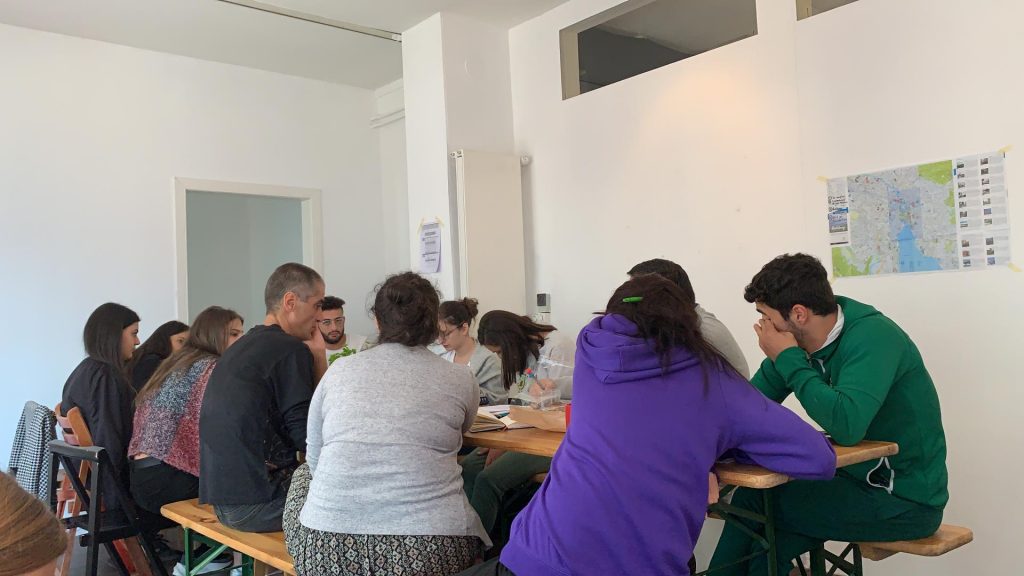
Hospitation: Hohe Promenade
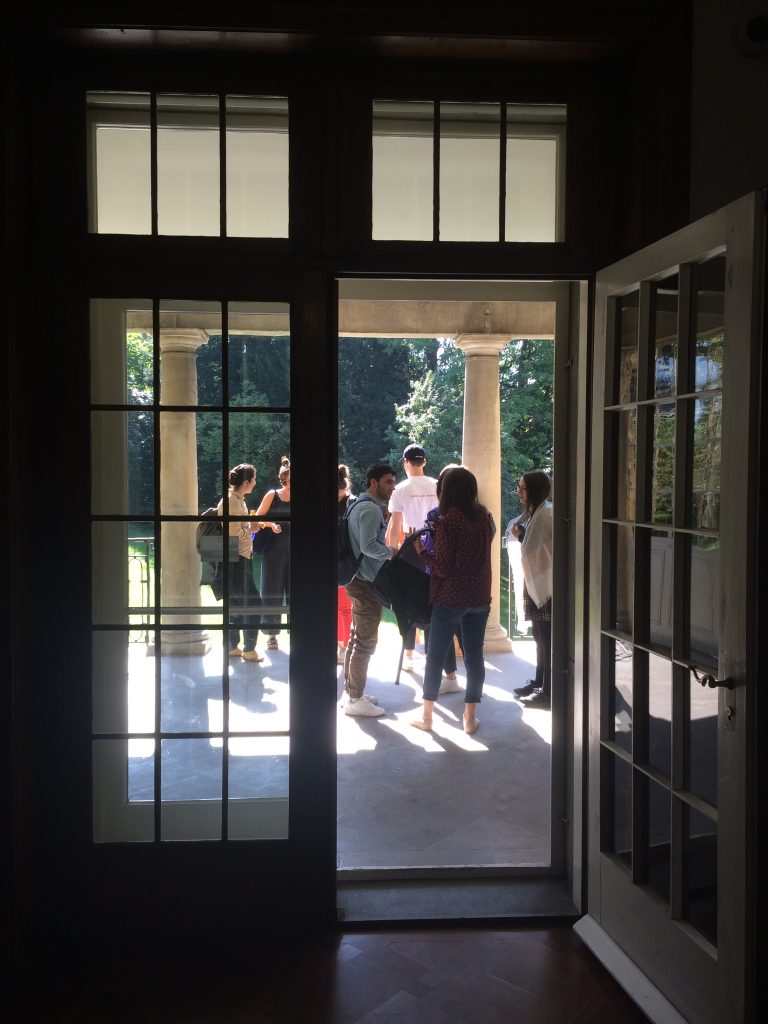
Reading John Dewey at artasfoundation
Thursday, 05.09.2019
Kunsthalle Zurich, Peter Wächtler und Stefan Tcherepnin
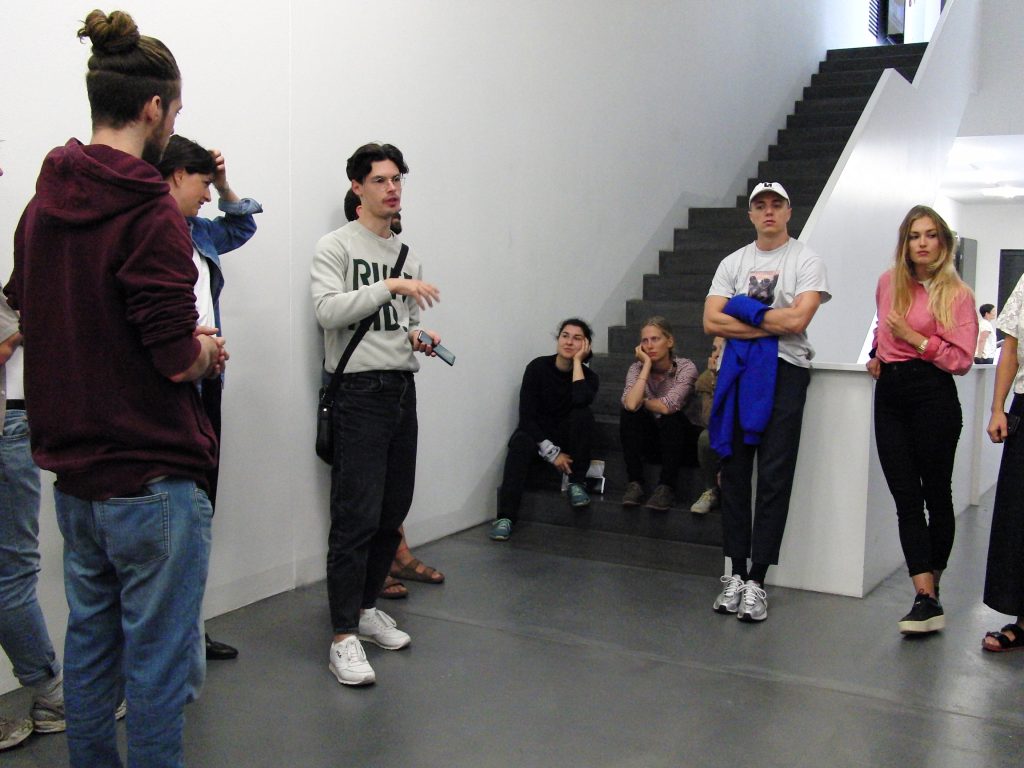
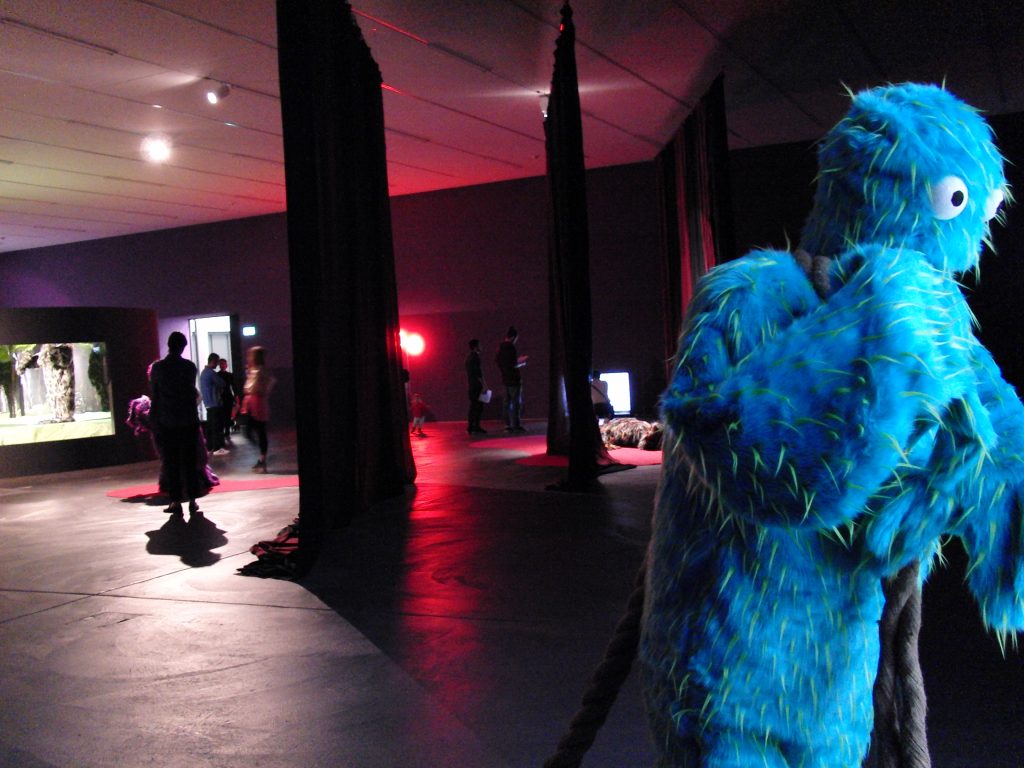
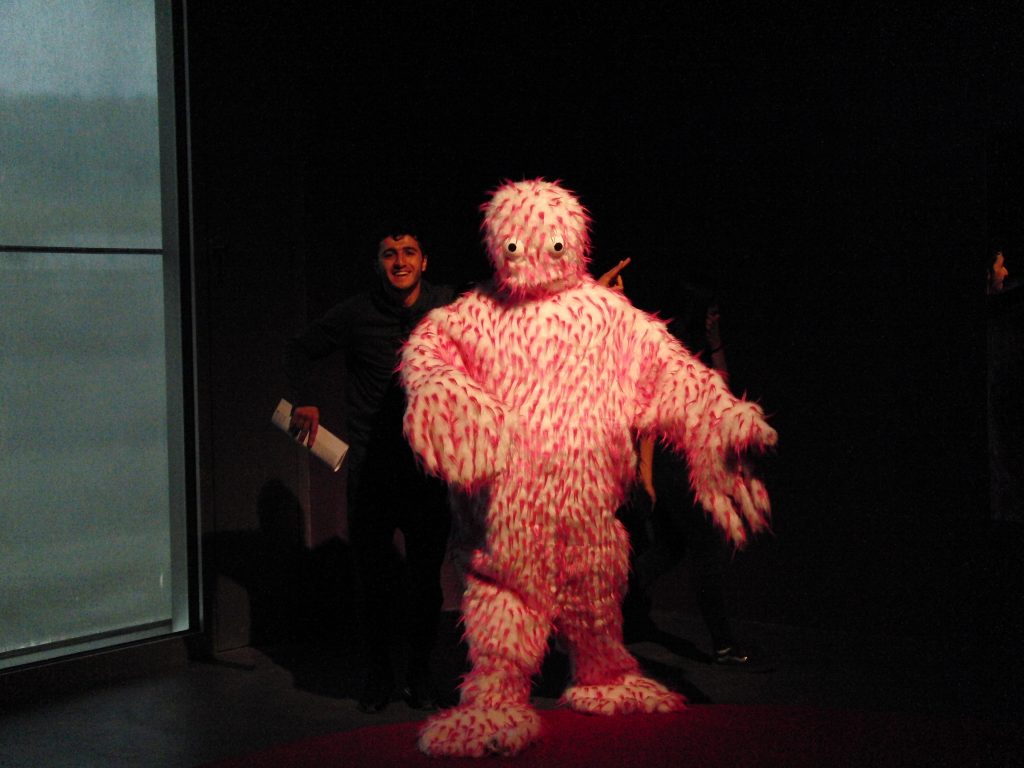
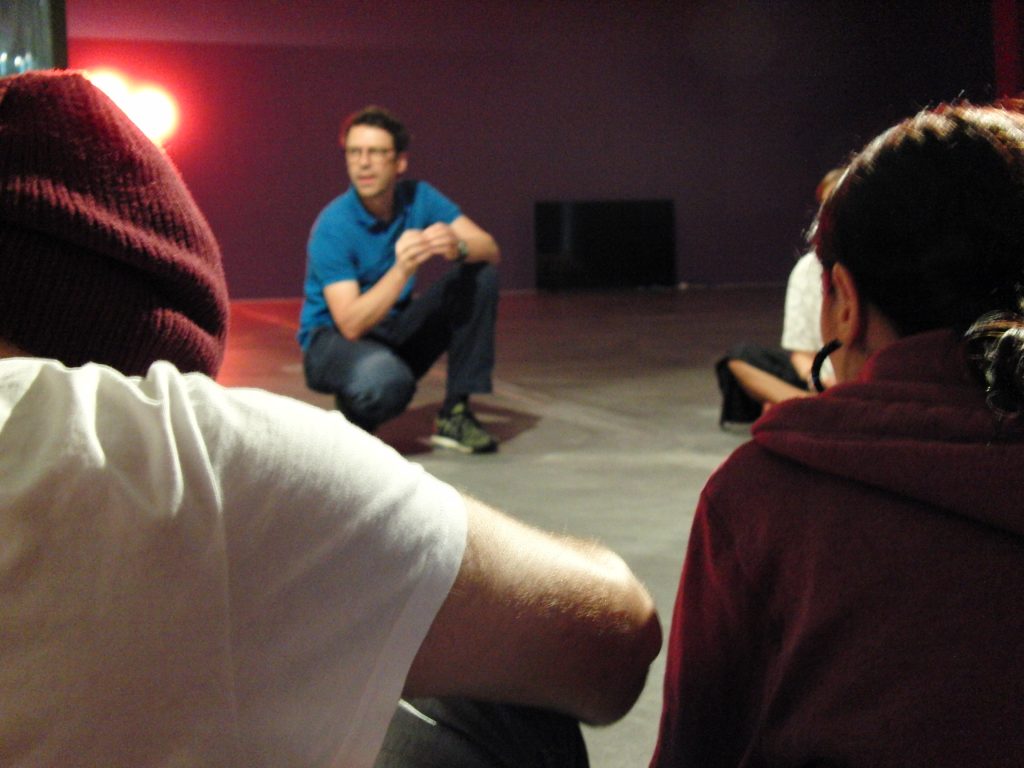

Hospitation: Atelierschule Zürich
Dance Performance
Friday, 06.09.2019
Taking Part: Autonome Schule
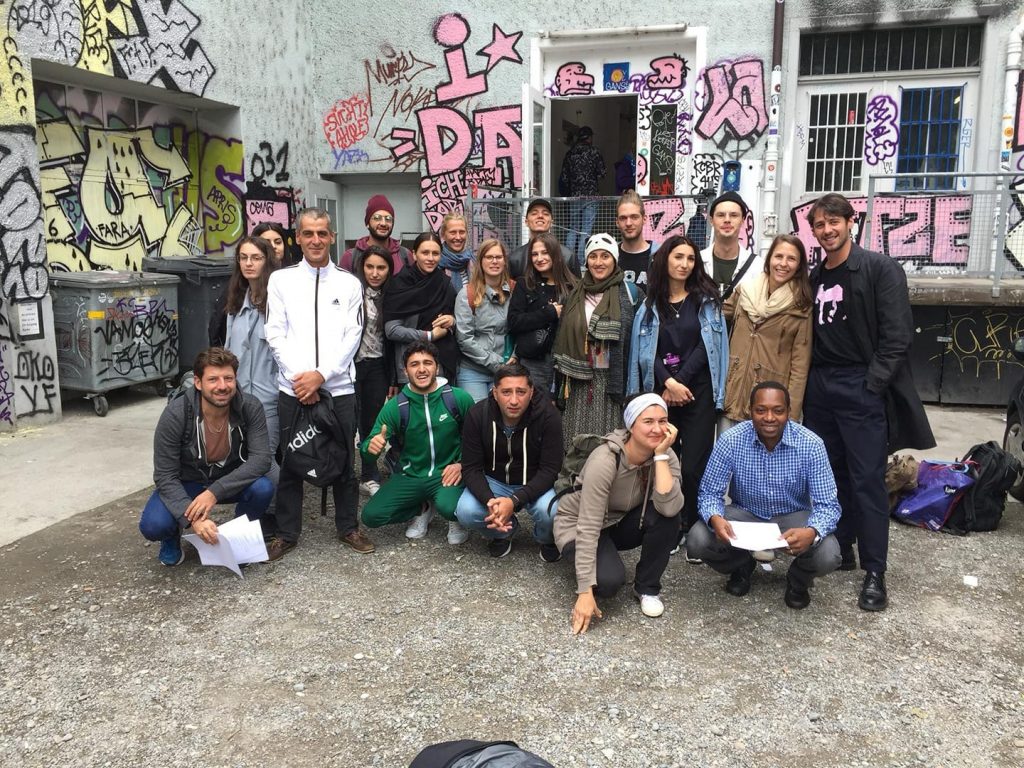
Preparations at Toni Areal
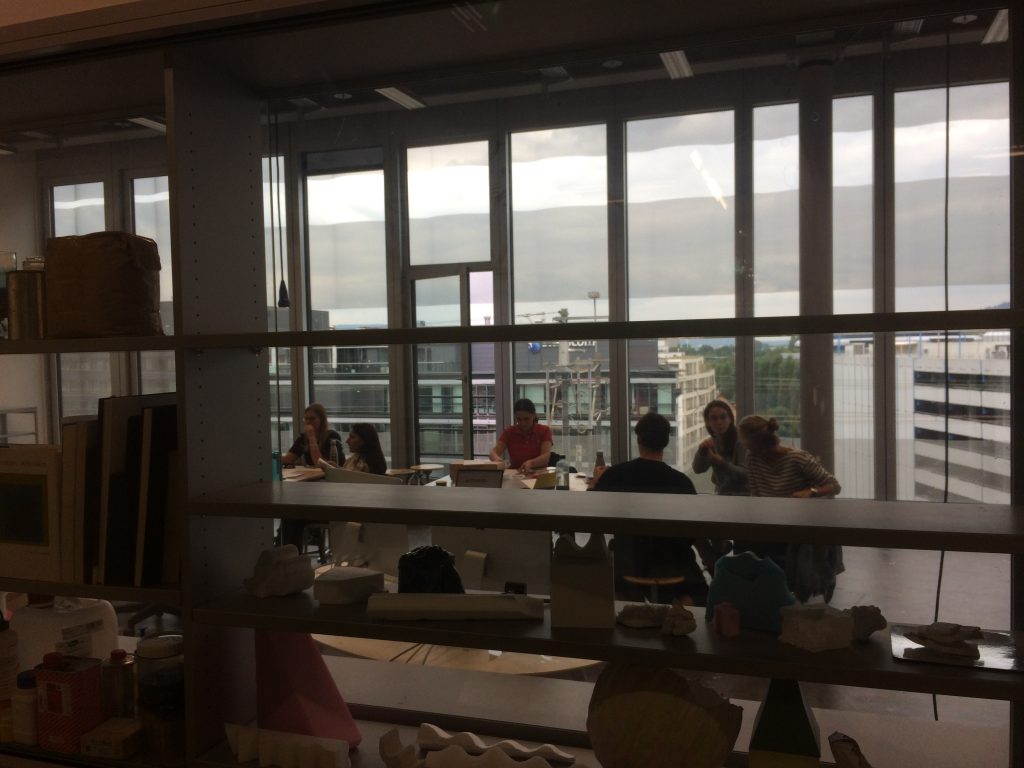
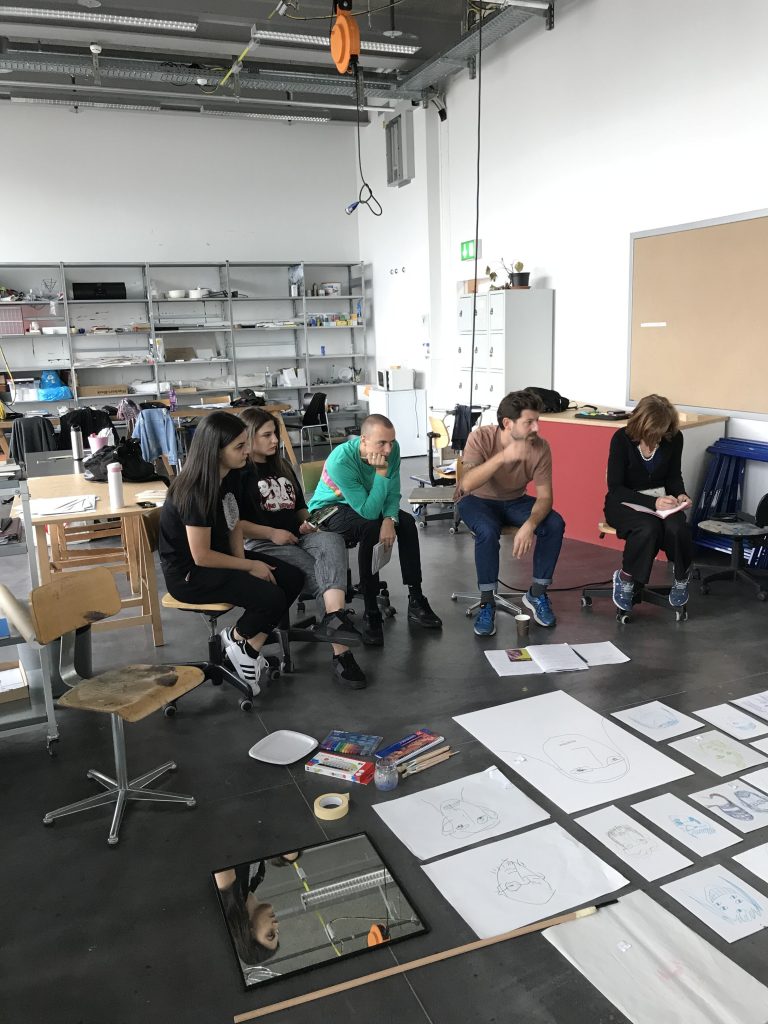

Raclette at Les Complices*
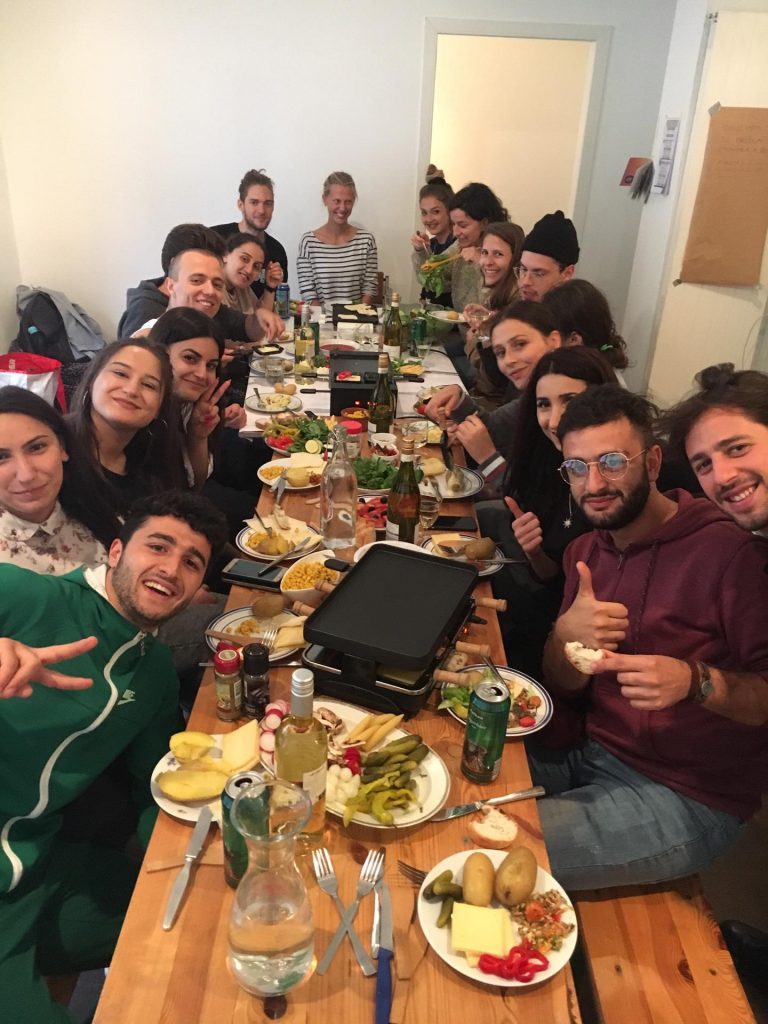
Saturday, 07.09.2019
Lange Nacht der Museen
Monday, 09.09.2019
Preparations at Kantonsschule Zürcher Unterland, Bülach
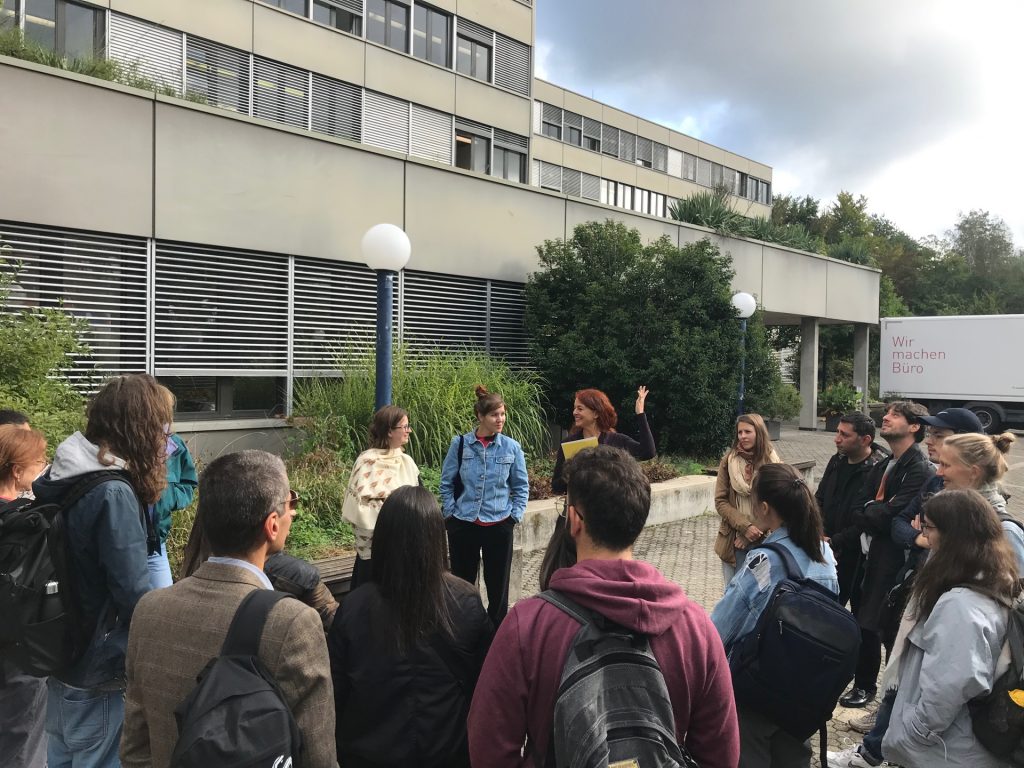

Tuesday, 10.09.2019
Teaching Lessons in Bülach
Wednesday, 11.09.2019
3 different workshops
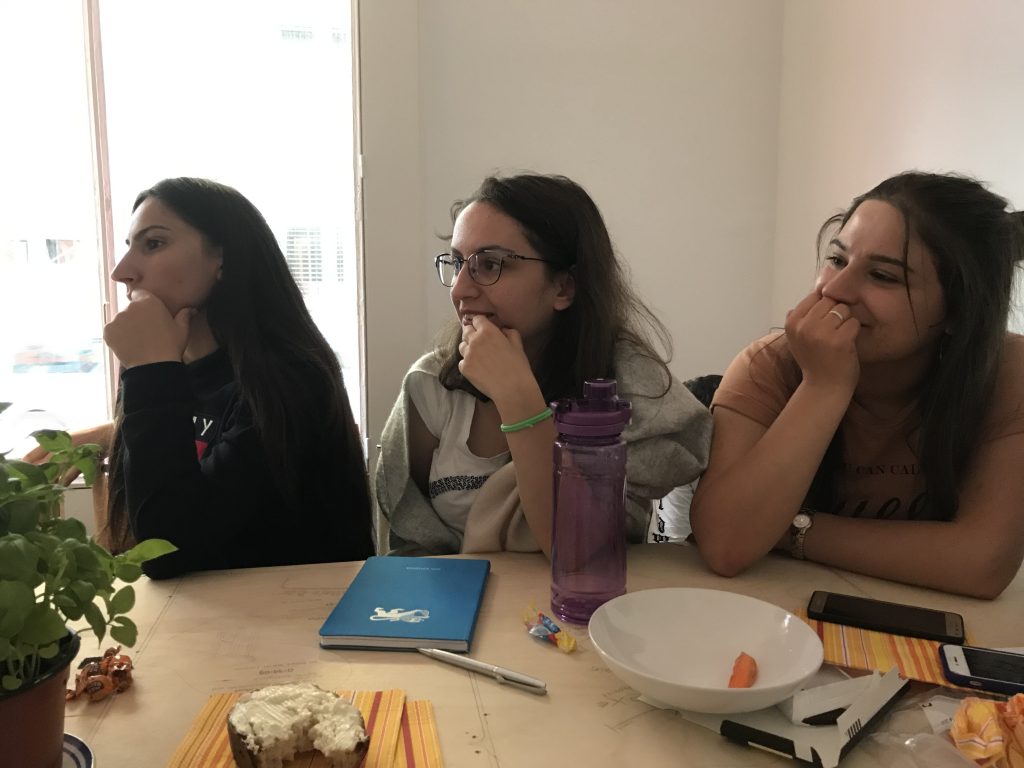
Heinrich and Olivia – Feedback methods
Davit – Sketch Paintings
Sevada – Characteristics for the plein-air painting
Barbecue in the garden of Jean-David
Thursday, 12.09.2019
Teaching Lessons in Bülach
Friday, 13.09.2019
Reflection and Feedback
Saturday, 14.09.2019
Zürich – Performance Festival Giswil
Sunday, 15.09.2019
Farewell
Within our lesson we explore the topic performance/happening. The planned lesson will turn itself into a performance, or is every teaching lesson anyway a performance?
Through not translating a foreign language we question the concept of languages as a communication tool. Is the intention behind a language adding up even if words are not understandable? How do the pupils react in a moment of uncertainnes created by not having clear directions from the teacher but only having a table full of different material? What will be the result of a lesson full of predestinated missunderstandings? In a second step we give the pupils the opportunity to switch the role of a ‚not understanding learner‘ into the one of a ‚not understanded teacher‘ by letting the pupils tell instructions to their classmates in their own foreign language. In this way they discover the meaning of a performance by being part of it from differnt points of views.
Yerevand, Arev, Janina, Elisa
The main goal of a lesson is to answer to the question “who are you?”. It is an interesting question and can be answered in a variety of ways: students can paint what they like to do, what they look like, their dreams, personality, their cultural identity- and so on. How students describe themselves and what colors they use can give us a better idea of their identity. The painting represents what makes them unique, and shows their individual style, their inner emotions and thoughts.
Դասի նպատակը ուսանողի ինքնության կերտումն է։ Նրանք կարող են պատկերել ամենը ինչից կազմված է իրենց անհատականությունը ՝ սիրած զբաղմունք, արտաքին, երազանքներ, մշակութային ինքնություն և այլն։ Թե ինչպես և ինչ գույներ կօգտագործեն ուսանողները աշխատելիս, կօգնի մեզ լավ պատկերացում կազմել իրենց ինքնության մասին։ Նկարը կարտահայտի ուսանողի անհատականությունը և յուրօրինակ ոճը, ներքին հույզերն ու մտքերը:
The lesson topic: The conflict of “warm” and “cold”.
The task: To paint or to draw any kind of conflict of ”warm” and ”cold; no matter, it’s the difference between colours, nature or nations, countries, etc.
The technique: To express it with any possible material by which you can paint.
The method: To give the task to a class dividing the students into groups. The groups do brainstorms, decide their theme and begin to paint.
*It will give them opportunity to think and deceide in a moment and to look at the question from different points of view, to try to paint to contradict things. And they will understand the coulors.
Դասի վերնագիր՝ Տաքի և սառի բախումը
Առաջադրանքը՝ նկարել տաքի և սառի ցանկացած բախում, կարևոր չէ, դա կլինի գույների, բնության, ազգերի կամ պետությունների կամ այլնի միջոցով։
Տեխնիկան՝ նկարել դրանք ցանկացած հնարավոր նյութով, որով կարելի է նկարել։
Մեթոդը՝ առաջադրանքը տալ խմբերի բաժանված դասարանին։ Նրանք պետք է անեն մտագրոհ և ապա սկսեն նկարել։
Միտված է նրան, որ յուրաքանչյուրը կներկայացնի իր հոգեվիճակի անհամատեղելելիությունը համատեղելիության հետ, կարող է իր ներսում հաշտեցնել կարողանալու և չկարողանալու խնդիրը, լինելու և չլինելու, այո֊ի կամ ոչ֊ի։ Հակադիր կետերը միացնելու, իրավիճակի այլ պատկեր ստանալու ։ Նպատակը՝ որ չհամատեղելին, չկարողանալը կոտրվեն։
Երկրորդ շաբաթում մենք բացի դասավանդելուց հասցրինք նաև շատ այլ գործերով զբաղվել, օրինակ այցելեցինք Հայաստանի ամենանշանակալի վայրերից մեկը՝ Մատենադարան
Second week we have done much more than just giving and attending lessons. For excample, we visited one of the most wonderful places of Armenia – Matenadaran.
Շվեյցարացի ուսանողները նաև մասնակցեցին Ադ լիբիտումի կազմակերպած Արվեստը ազատության միջոցով ուսանողական ցուցահանդեսի փակման արարողությանը։
Swiss students also went to the closing ceremony of Art exhibition Art Through Freedom organised by Ad libitum student initiative
We spent our times walking in the city, going to some cafes, clubs, museums etc.. The very last day we went to the one of the most famous clubs of Yerevan Kond House and there we had a great evening with all of our members, translators, organisers and teachers.
Մենք մեր ժամանակն անց էինք կացնում քաղաքում քայլելով, սրճարաններ կամ ակումբներ այցելելով և իհարկե թանգարաններ։ Վերջին օրը մենք գնացինք Երևանի ամենահայտնի ակումբներից մեկը՝ Կոնդ հաուս և այնտեղ հրաշալի երեկո անցկացրինք բոլոր անդամների, թարգմանիչների, կազմակերպիչների և ուսուցիչների հետ։
Looking forward for the second part of the program in Zurich
Անհամբերությամբ սպասում ենք ծրագրի երկրորդ մասին՝ Ցյուրիխում
*As I have no photos or information about the other groups’ lessons, here is only about our classes description
Քանի որ ես չունեմ տեղեկություն և լուսանկարներ մյուս խմբերի դասերից, այստեղ կլինի միայն մեր խմբի դասերի նկարագրությունը
“City of plastic”
During our lessons the pupils will learn more about environmental issues. They will transform materials which are mostly used once such as plastic, paper or cardboard into a city made out of garbage.
After collecting cups, plastic bottles or plastic bags just in the surrounding of the Pedagogical University of Yerewan we realized how much garbage we cause.
The pupils are free to experiment in their group with different kind of techniques (cutting, stapling, glueing) to create a “city”. We want to re-value materials of everyday
life. Our aim is to become more conscious of nature and our environment and to emphasize this during school.
Պլաստիկ քաղաք
Մեր դասի միջոցով երեխաները ավելի շատ բան կիմանան բնապահպանական խնդիրների մասին։
Նրանք կձևափոխեն այն նյութերը որոնք հիմնականում պլաստիկից , թղթից կամ պոլիէթիլենից են ու օգտագործվում են միայն մեկ անգամ ու դրանցից կստանան քաղաք՝ պատրաստված անպետք իրերից։
Միայն մանկավարժական համալսարանի շրջակայքից հավաքռլով թղթե բաժակները, պլաստիկ շշերև այլն, հասկացանք թե ինչքան աղբ ենք կուտակում։
Աշակերտներն ազատ են խմբերում փորձարկել տարբեր տեխնիկաներ՝ ստանալու համար քաղաքային պատկեր։
Մենք ուզում ենք վերաիմաստավորել կենցաղային իրերի արժեքը։ Մեր նպատակն է դառնալ ավելի գիտակից՝ բնության ու մեր շրջակայքի հանդեպ, և անել դա դպրոցի միջոցով։
Դասի պլան
18.04.2019
Դասի բնույթը՝ Փորձառական կերպարվեստ
Դասի թեման՝ Շրջակա աշխարհը, բնապահպանական խնդիրներ
Դասի նպատակը՝ Կերպարվեստի միջոցով խթանել աշակերտների իրազեկվածությունը բնապահպանական եւ կենսական անհրաժեշտության խնդիրների մասին: Առաջացնել հետաքրքրվածություն դեպի բնությունը եւ ուշադրություն այն չաղտոտելու համար:
Դասի անցկացման ձեւը՝ Պլաստիկե եւ թղթե մեկանգամյա իրերի միջոցով աշակերտները խմբային աշխատանքով պատկերում են քաղաք, այսպիսով ցույց տալով վերականգնողական ռեսուրսների հնարավորությունը:
Դասի կահավորումը՝ Պլաստիկ, սկոչ, սոսինձ, մկրատ եւ այլն
Դասի ընթացքը՝ ներկայացում, ակտիվացնող հարցեր թեմայի
վերաբերյալ, թեմայի հակիրճ եւ սեղմ ներկայացում գրատախտակին
նկարելով որեւէ օրինակ: Շրջել դասարանով եւ փորձել խորհուրդներ տալ աշակերտներին: Դասի ամփոփում եւ ավարտ:
Վերլուծություն
Դասն անցավ փորձառական միջազգային տարբերակով։ Դասավանդեցինք մեկ հայ եւ մեկ շվեյցարացի ուսանող։ Քանի որ դասարանում կար ընդամենը տասներկու երեխա, դասն անցկացրինք խմբային տարբերակով։ Դասասենյակում կար մեկ քարտեզ, որի վրա պետք է կառուցվեր պլաստիկե քաղաքը։
Առաջադրանքի բնույթն այս է. Պատրաստել քաղաքային պատկերներ անպետք մեկանգամյա օգտագործման պլաստիկե կամ թղթե շշերից եւ բաժակներից եւ այլ անպետք թափոններից։
Գաղափարը՝ վերականգնողական էներգիայի եւ մեկանգամյա իրերի բազմակի օգտագործման հնարավորության մասին երեխաներին տեղեկացնելն է։
Դասի վերջում ստացվեց այսպիսի հետաքրքիր քաղաք, եւ հետաքրքիր քննարկում ոգեւորված աշակերտների եւ հայ ու շվեյցարացի ուսանողների միջեւ։
These two weeks were for a very intense and interesting experience, both concerning our individual and professional development.
We found out rather quick, that our group has a common interest in nature. Therefor we decided to bring the global discussion around the environmental issues into the classroom. Although it took us a little time to find a common language, not only concerning English-Armenia, but more regarding our understanding of how to create an exercise. After this was cleared out the work in our group got more dynamic. It was really helpful during our planning and the co-teaching, that we gave each other sufficient respect, space and declared clear roles in the classroom. Something wich worked out were a new challenge. We learned a lot about the value and impact of non-verbal language.
It was very interesting to severy well especially when we had to make fast decisions as a group concerning changed circumstances (like the age of the children or the length of the lesson). But not only the communication among us, but also the talks and individual support with the pupils e how the pupils were at first a little overwhelmed with the exercise of creating a future city made out of garbage. On the one hand because the task was more open than they were just to, and on the other hand caused due to the unusual material of garbage. After a short time most of them were driven by their intrinsic creative energy. They got to know about the potential of the “worthless” material and their imagination and storytelling were captured. Also we realized the importance of the start and the end of the lesson. Therefor we introduced ourselves every time as a group and finished in the end with a big group discussion around the builded city. There we could see, how our aim to emphasize the consciousness of the environment during our lessons with this practical works were achieved
Today, it has been exactly one week since we said goodbye to each other after this intense and precious time we spent together. It’s a good moment to look back and think about the most important things we learned in terms of teaching.
The importance of key moments
We learned, that especially in the announcing and explaining part of the exercise it is extremely necessary to catch the full attention of the pupils. While having this attention, it is important to be precise in your words and describe the aim properly. If this „key instructions“ are formulated too vaguely, the clarification work with the individual pupil during the lesson is enormous and also causes a lot of distraction for the ones who aren’t involved in the conversation. Particularly in big classes, where you don’t have the capacity to look after every single pupil, the planing of these key moments are indispensable. We found out, that the key moments impacts on the lesson is so strong, that we could check the quality of the explanations by looking results of the pupils works.
Expressing love and passion for what you’re teaching
This is as simple as it is important. Commitment for what you are doing is essential and the people you are working with (pupils in our case) will react on it. So we would argue that love and passion is a main component of a successful class, just like methodical skills and knowledge about a topic.
Group teaching
Group teaching makes it possible to unite the passion for a subject an provide a high level of attention and support towards a class. Although, it’s a challenge to teach in a group, especially during class itself. Now and then, pupils ask questions, that you are not prepared to answer or didn’t discuss the issue in the group beforehand. The risk of contradicting each other is here which could lead to confusion in the class. Also, there is a language barrier, so we don’t always know, what our colleagues are talking to the pupils. Therefore it is very important to discuss the aim of the exercise very clearly as a preparation for a lesson. If the aim is clear, everybody is able to check their answer according to this aim, which will provide an accordance. Besides that, we experienced the importance of defining and announcing the role of every single participant in the classroom. It is not only helpful for the pupils to focus, but also for the teachers to know their task. Knowing the task makes it possible to give and take each other space in the right moment.
In the end it was a very enriching experience for all of us. We mastered different teaching situations together and supplemented each others knowledge. We gained insights into various approaches of teaching and found our own way by combining a technical access and the ability to express individual interests. It was instructive to see the results of the pupils work of each lesson to adapt and improve our own way to convey a content and it’s aim.
We are looking forward to the experiences that we will gain in September!
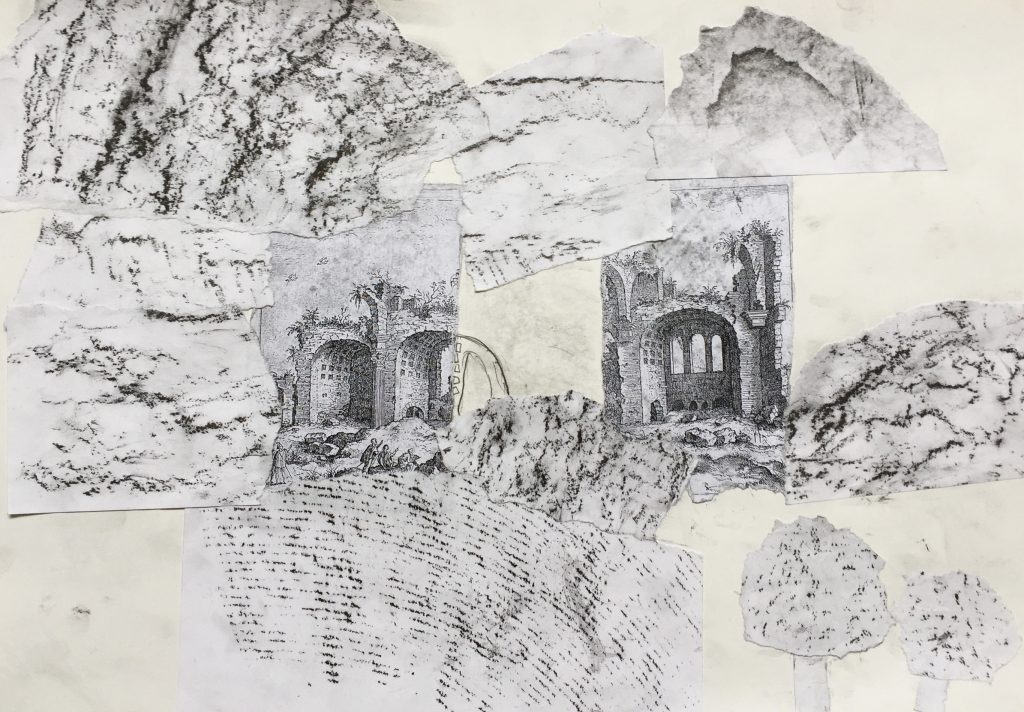

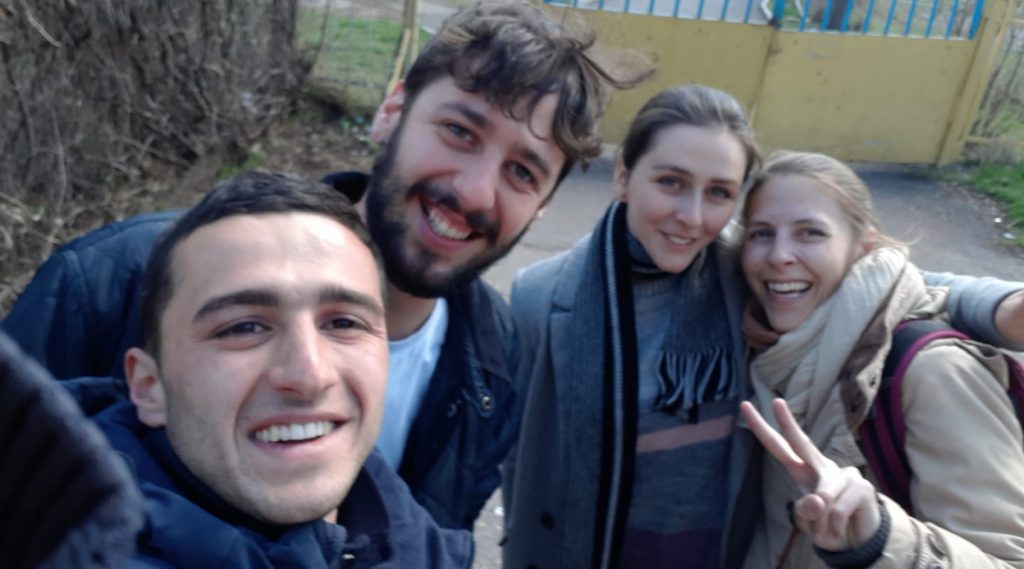
These two weeks were for a very intense and interesting experience, both concerning our individual and professional development.
We found out rather quick, that our group has a common interest in nature. Therefor we decided to bring the global discussion around the environmental issues into the classroom. Although it took us a little time to find a common language, not only concerning English-Armenia, but more regarding our understanding of how to create an exercise. After this was cleared out the work in our group got more dynamic. It was really helpful during our planning and the co-teaching, that we gave each other sufficient respect, space and declared clear roles in the classroom. Something wich worked out very well especially when we had to make fast decisions as a group concerning changed circumstances (like the age of the children or the length of the lesson). But not only the communication among us, but also the talks and individual support with the pupils were a new challenge. We learned a lot about the value and impact of non-verbal language.
It was very interesting to see how the pupils were at first a little overwhelmed with the exercise of creating a future city made out of garbage. On the one hand because the task was more open than they were just to, and on the other hand caused due to the unusual material of garbage. After a short time most of them were driven by their intrinsic creative energy. They got to know about the potential of the “worthless” material and their imagination and storytelling were captured. Also we realized the importance of the start and the end of the lesson. Therefor we introduced ourselves every time as a group and finished in the end with a big group discussion around the builded city. There we could see, how our aim to emphasize the consciousness of the environment during our lessons with this practical works were achieved.
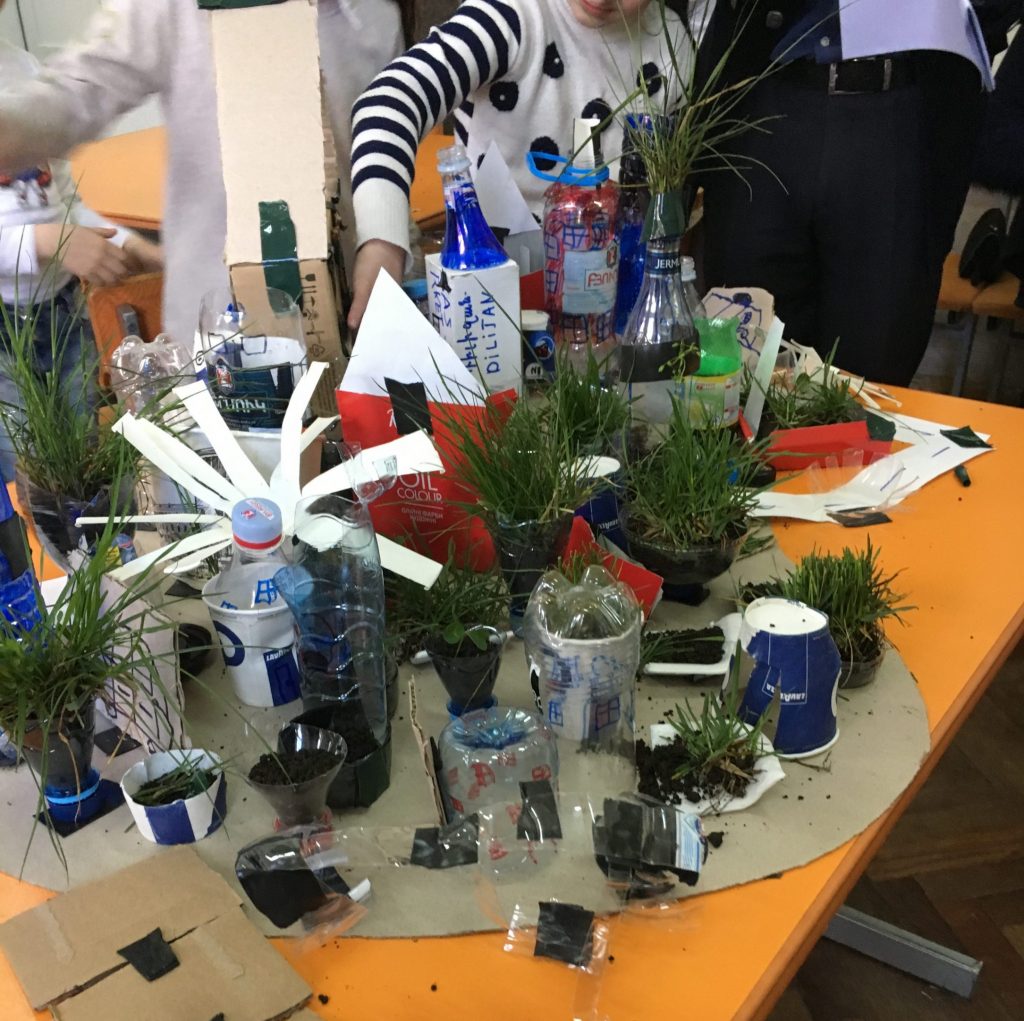
In the morning we had group discussions of Jacques Rancière’s text “The ignorant schoolmaster”. Later on we shared our ideas about it in the bigger group. Finally we went to the ICA, the Institute for Contemporary Art, where we continued our discussion with Nazareth Karoyan and had an input by Serob Khachatryan.
Առավոտյան ունեցանք խմբային քննարկում Ժաք Ռանսիերի Անգետ ուսուցիչը գրքի վերաբերյալ։ Ավելի ուշ մենք կիսվեցինք տպավորություններով ավելի մեծ խմբում։ Երեկոյան գնացինք Ժամանակակից արվեստի ինստիտուտ, որտեղ շարունակեցինք մեր քննարկումը արվեստի քննադատ Նազարեթ Կարոյանի և Սերոբ Խաչատրյանի հետ։
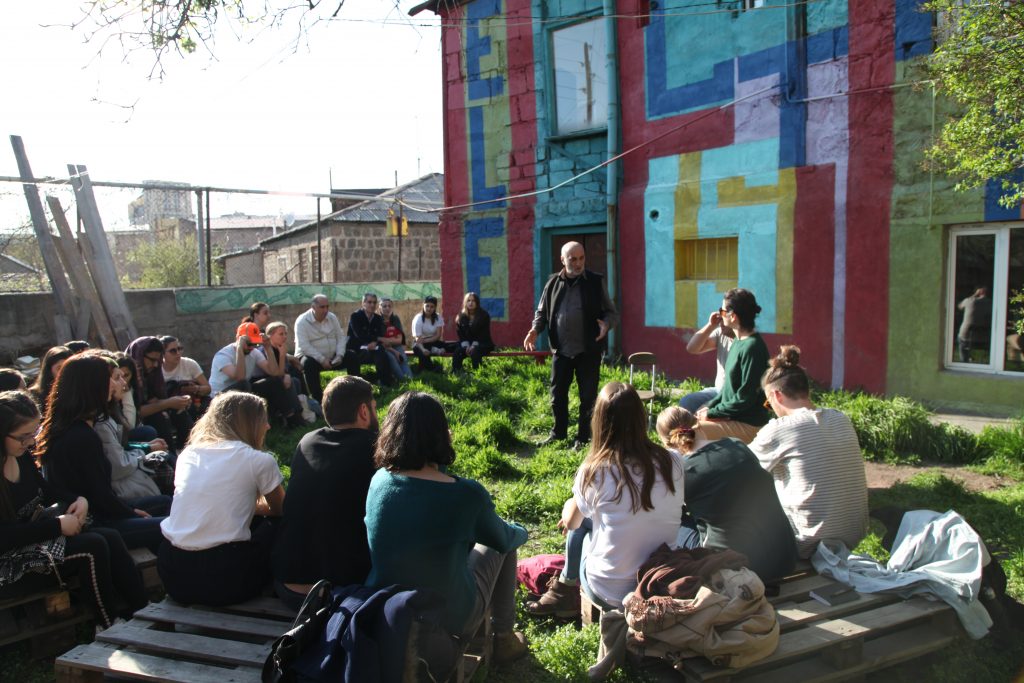
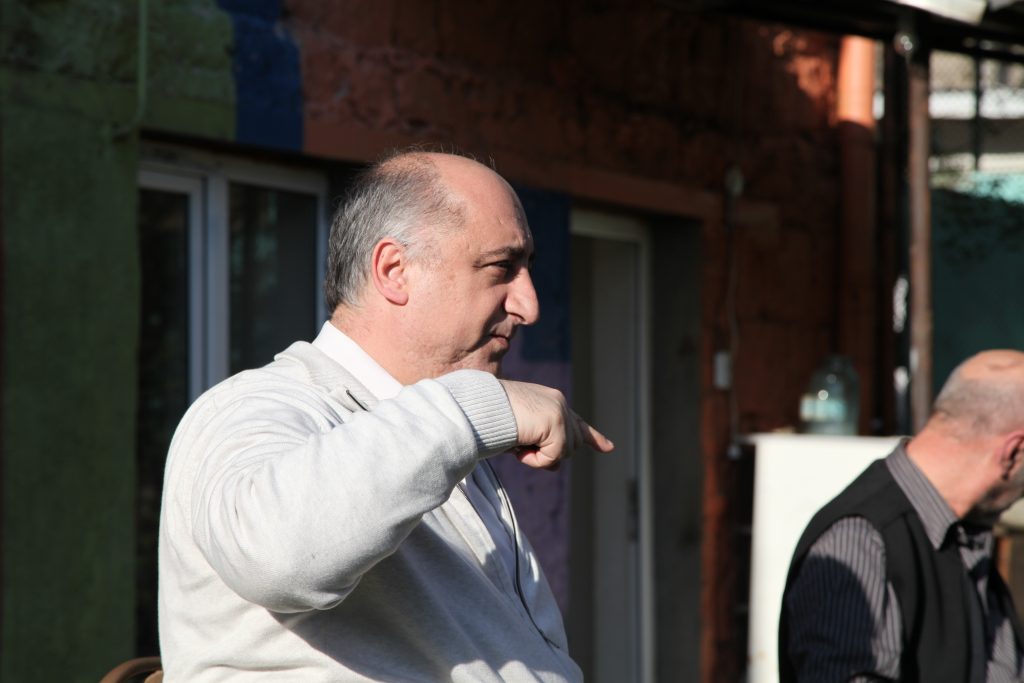
Today was excactly like the previous one, only the groups changed their directions and had more time for preparation of the lessons.
Այս օրը շատ նման էր նախորդին, միայն թե խմբերը փոխեցին իրենց ուղղությունները և ունեցան ավելի շատ ժամանակ պատրաստվելու համար։
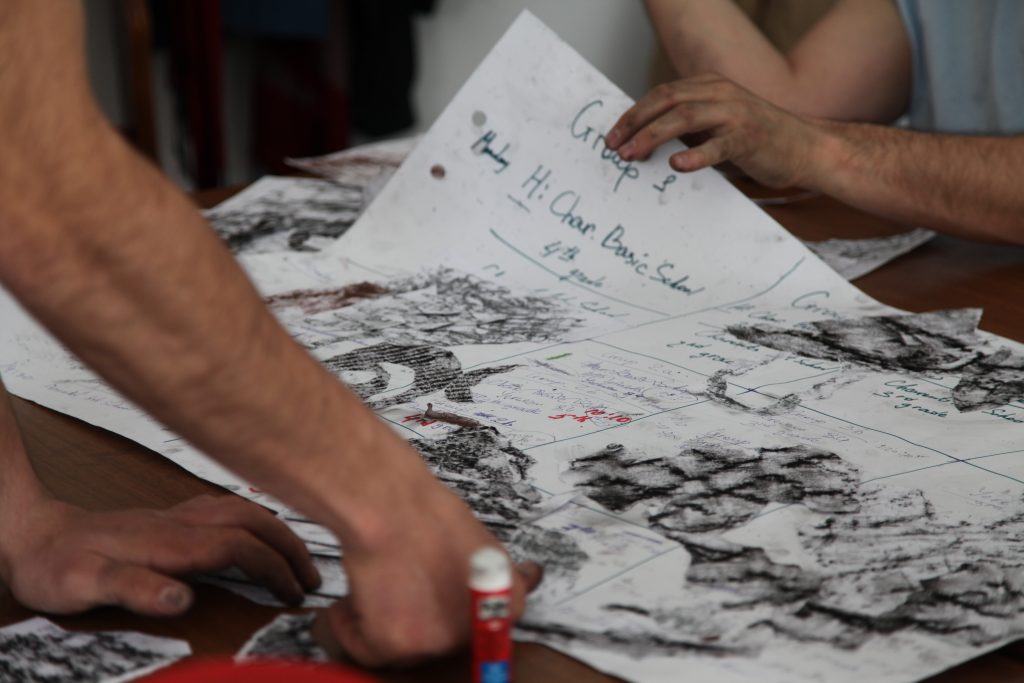
Also today was special because we had a very useful and interesting lection read by David Hovhannisyan. He talked about our educational system, issues and what works well. Unfortunately we didn’t have enough time to listen to the whole lection but the main idea came across.
Նաև այսօրը յուրահատուկ էր, քանի որ մենք ունեցանք շատ հետաքրքիր և օգտակար դասախոսություն Դավիթ Հովհաննիսյանի կողմից։ Նա խոսում էր մեր կրթական համակարգի, խնդիրների մասին և թե ինչն է լավ աշխատում։ Ցավալիորեն չունեցանք բավարար ժամանակ լսելու համար ամբողջ դասախոսությունը, բայց հիմնական գաղափարը պարզ դարձավ։
And we had the privilege to be present at Davids classes, and not only be present just as observers, but also to participate in it.
We drew a woman sitting there, her face, her portrait. David was explaining the Swiss students the academic ways of drawing.
ԻՆչպես նաև մենք ունեցանք հնարավորություն ոչ միայն ներկա գտնվելու Դավիթի դասին, այլ նաև մասնակցելու դրան։
Նկարում էինք բնորդ՝ կնոջ, նրա դեմքը, պորտրետը։ Դավիթը շվեյցարացի ուսանողներին ներկայացրեց նկարելու ակադեմիական ոճը։

After the lesson we had such an exciting discussion between Armenian and Swiss students about our ways, technics and differences in drawing.
Դասից հետո մենք բավական հետաքրքիր քննարկում ունեցանք հայ և շվեյցարացի ուսանողներով, հիմնականում այն մասին, թե ինչով են տարբերվում մեր նկարելու տեխնիկաները, ոչերը և հմտությունները։
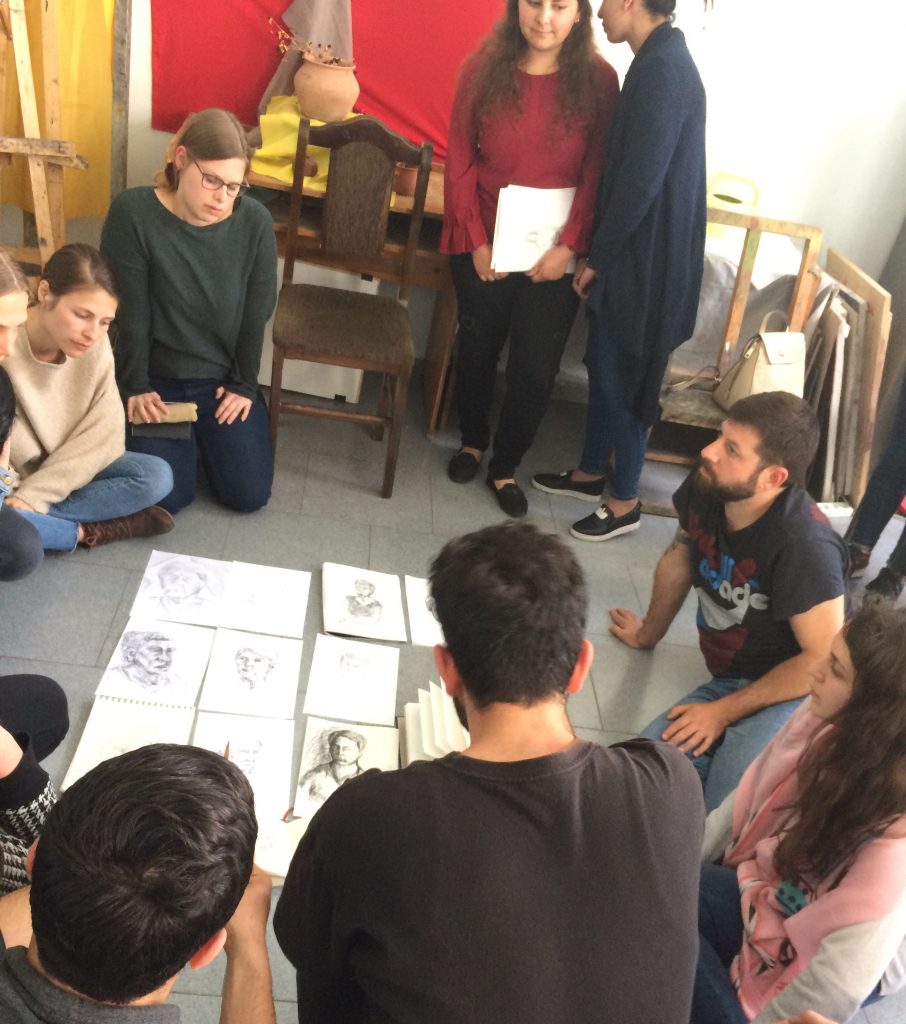
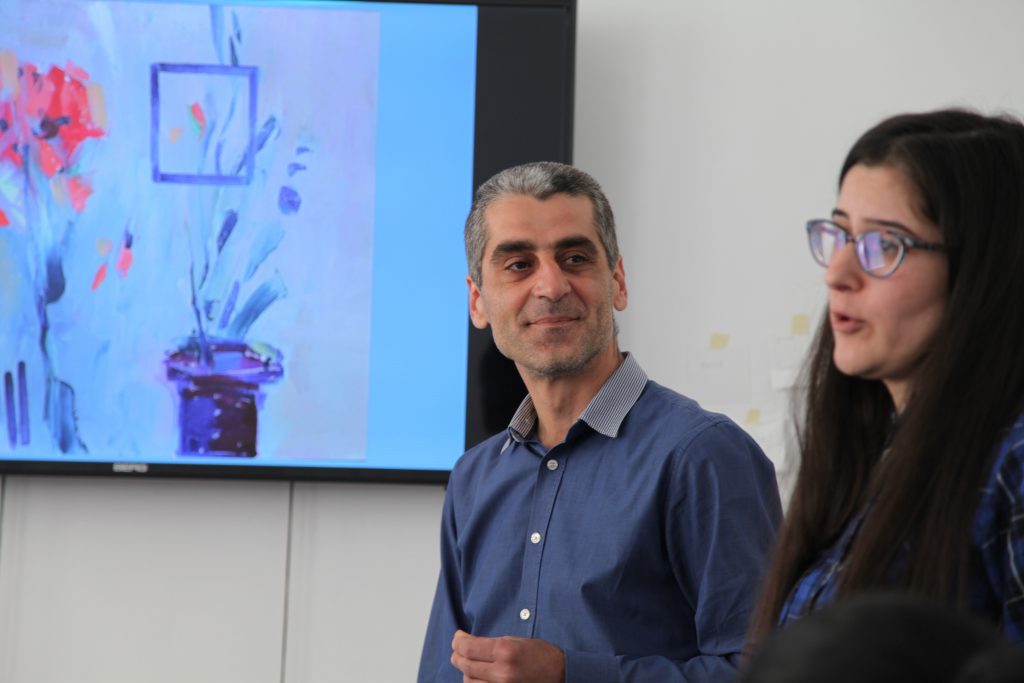
We started this day with a very interesting lesson by Sevada Sargsyan. He talked obout enviromental issues and solving this kind of issues with the means of the arts. He mentioned also that there are some plein air painting actions for saving the nature.
Այս օրը սկսեցինք Սևադա Սարգսյանի շատ հետաքրքիր դասախոսությամբ։ Նա խոսում էր բնապահպանական խնդիրների և այդպիսի խնդիրների լուծումը կերպարվեստի միջոցով տեսնելու մասին։ Նա նաև նշեց, ոռ կան պլեներային նկարչության ակցիաներ բնությունը պահպանելու խնդրով։
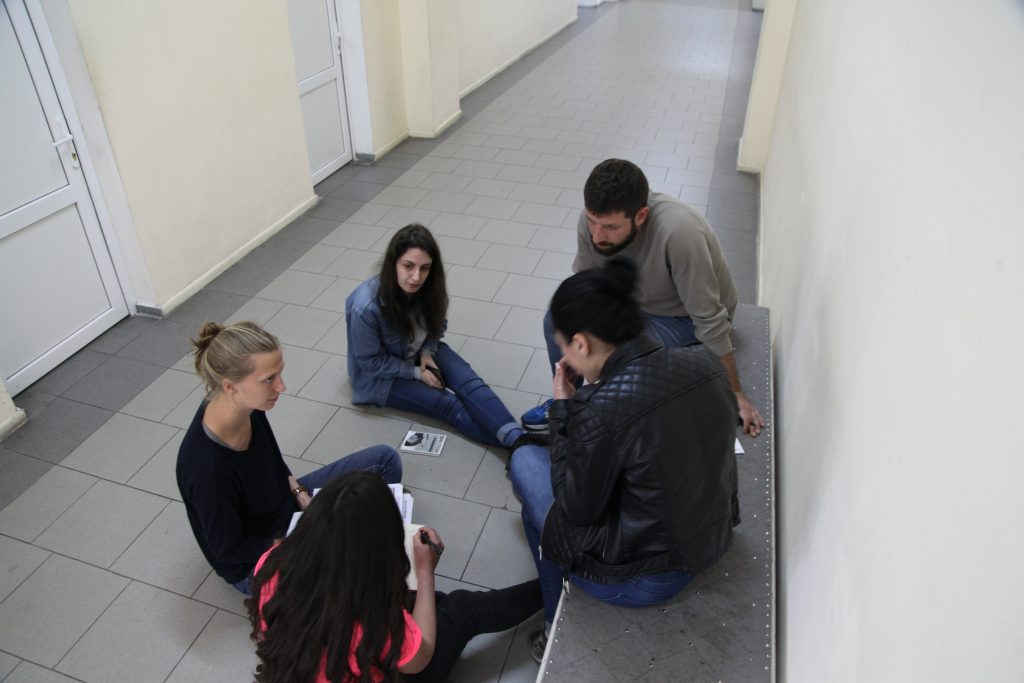
After this lection the groups had to think about the group tasks and which methods they want to apply. Also two groups went to Terlemezyan school for hospitation and the other two groups to Igityan center.
Այս դասախոսությունից հետո խմբերը պետք է մտածեն առաջադրանքի և այն մեթոդների մասին, որոնք ցանկանում են կիրառեր դասի ընթացքում։ Նաև երկու խմբերը գնացին Թերլեմեզյան քոլեջ և Իգիթյան կենտրոն։
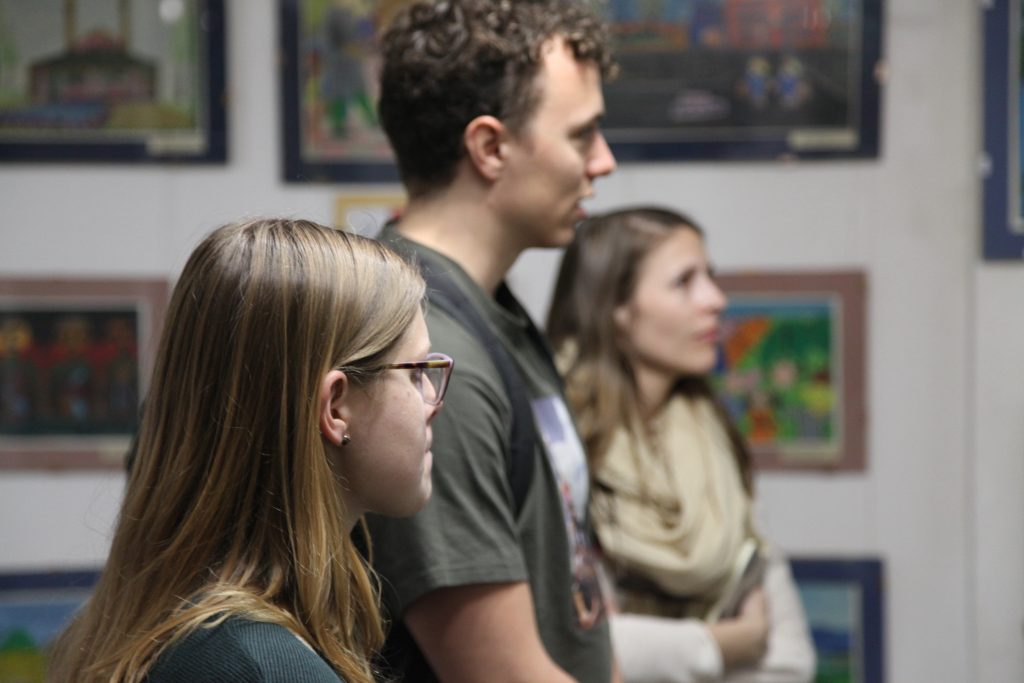
In the evening we continued our discussions about the group work.
Երեկոյան շարունակեցինք մեր քննարկումները խմբային աշխատանքի վերաբերյալ։
Մեր խումբը փորձեց ուսուցման տարբեր ձևեր:Մենք դասավանդեցինք երկու խմբով երկու հայ և երկու շվեյցարացի:Հատկապես խմբով դասվանդելը իսկապես շատ դժվար էր և դասի ժամանակ պարզաբանման կարիք էր լինում,դա իրոք շատ հետաքրքիր և ըմբռնումով լի փորձ էր և մենք շատ բան սովորեցինք դրանից:
-Դասի պլանավորումը և ճիշտ մեթոդի ընտրությունը իսկապես շատ կարևոր է:Պլանավորմամբ դուք կարող եք պատրաստ լինել ցանկացած անսպասելի իրադարձության և դա շատ անհրաժաեշտ է,երբ դասավանդում է մեկից ավելի անձ:
-Դասի լավ ավարտի կարևորությունը:Դասն ավարտելու լավ ձևն օգտագործելով դասի նպատակն ավելի ակներև է ուսանողներին:Եվ նաև շատ կարևոր է երեխաների աշախատանքներին սենյակ և կարևորություն տրամադրել:
-Հաղորդակցումը բանալի է:Չորս ուսանողով դասվանդելու ժամանակ մենք իսկապես հաղորդակցման լավ ձև չէինք գտնում:Հաղորդակցման ձևերն ու կոդերը պետք է նախապես քննարկվի մինջև դասը:
– Երեխաների հետ անհատական շփում:Մինչ մենք փորձում էինք վարժութունը ճիշտ ձևով բացատրել ամբողջ դասարանին,միշտ չէր,որ յուրաքանչյուր երեխա լիովին հասկանում էր հանձնարարությունը:Այդ պատճառով երեխաների հետ անհատական շփումը շատ արդյունավետ է:Այս ձևով հնարավոր է դառնում բացատրել հետագա առաջադրանքը և աջակցել այն ամաչկոտ երեխաներին ովքեր չէին համարձակվում հարցեր տալ:
-Իմպրովիզացիան շատ կարևոր է:Եթե մենակ դասավանդելիս իմպրովիզացիայի շատ կարիք չի զգացվում,ապա խմբով ուսուցանելը միայն հնարավոր է դառնում ուսանողների իմպրովիզացիաների շնորհիվ:Անհնար է պլանավորել ամեն վարկյանը և երեխաների անսպասելի արձագանքը:Միայն իմպրովիզացիայի շնորհիվ է հնարավոր դառնում արագ արձագանքել:
-Երեխաներին մոտիվացնելը:Երեխաներին ստեղծագործության և երևակայության ազատություն տալով հնարավոր է դառնում երեխաներին մոտիվացնել և երեխաներին սովորեցնել,որ արվեստը դա արտահայտման ձև է,որը կարող է լինել միևնույն ժամանակ թե լուրջ և թե զվարճալի:
Our group tried out different teaching constellations: In basic school, we taught with the constellation of the two Armenian students together and two Swiss students together. In art school we taught together as one big group. Especially teaching within a group of four was really difficult and needed a lot of clarification during the lesson. It was an interesting and insightful experiment and we learned a lot from it:
– Planning the lesson and finding the right method for it is really important. By planning, you can be prepared for unexpected events and it is also very necessary for teaching with more than one person.
– The importance of a good finish. By using a good way of finishing a lesson, the lesson will show its aim to the students. It’s also very important to give room and importance to the works of the children.
– Communication is key. While teaching as a group of four students, we didn’t really find a good way of communication. Forms and codes of communication should be talked about and decided on before the lesson.
– Talking to the children individually: While we tried to explain the exercise to the whole class, not always every child fully understands the assignment. That’s why making individual explainations to the children is helpful. In this way, it is possible to further explain the exercise and support also shy children, who wouldn’t dare to ask questions.
– Improvisation is necessary. While improvisation is even necessary if you teach alone, teaching in a group of two or four is only possible if the teachers can improvise. It is never possible to fully plan for every possible event and the unforeseen reactions of the children need a reaction of the teacher. Only by improvising it is possible to react fast.
– Motivating the children: By giving the children the right amount of freedom for creativity and fantasy, it is possible to motivate the children and to teach them, that art is a form of expression that can be both fun and serious at the same time.
The first two lessons were an experiment and a new, interesting experience for all of us. We started teaching in tandems of two: two Swiss / two Armenian students.
On our first day of teaching we got to experience the surrounding, the frame of the school-system, we were working in and with. Therefor we could improve our methods based on the feedbacks and learnings from the first lesson. At Charentsavan Basic School we tought within “mixed” tandems (Armenian/Swiss), which worked very well. The pupils were engaged with the topic and the new technique, which we introduced. As a team we were able to interact dynamically and smoothly. All satified with this experience we moved to Charentsavan Art School, where the setting was totally different from what we have had expected. We tried to improvise and react to this unexpected changes but somehow the communication between us four didn’t work all that smooth. We tought all four of us together and together we made a beautiful mess. But even though this lesson wasn’t very satisfying, we were able to learn much from it. Challenges that we had managed before (like working with a well structured plan for the lesson), returned at this difficult moment and helped us to think deeper: We reflected on our role as teachers, what is important when co-teaching, how to interact with pupils, and what our aim as teachers actually is in general.
Կարծում եմ խմբի համար ամենահետաքրքրիր փորձը առաջին երկու դասերն էին Երևանի 84 դպրոցում: Որտեղ հնարավորություն ունեցանք ծանոթանալու դպրոցի կարգ ու կանոնին: Դասավանդեցինք հայ և շվեցարացի զույգերով, որից հետո ունեցանք անրադարձ մեր կատարած սխալներին և կարողացանք շտկել դրանք: Չարենցավանի հիմնական դպրոցում մենք բավականին լավ աշխատեցինք հայ-շվեցարացի տանդեմով, չորսս ՝որպես թիմ, դինամիկ և ներդաշնակ համագործակցություն ունեցանք: Աշակերտներին հետաքրքրել էր դասի թեման և նոր տեխնիկան: Մեծ բավականությամբ գնացինք Չարենցավանի Արվեստի դպրոց, որտեղ ամեն ինչ տարբերվում էր մեր ակնկալիքներից: Փորձեցինք տեղում հանպատրաստից շտկել առաջացած խնդիրները, ինչը խաթարեց խմբի ներդաշնակ աշխատանքին: Բոլորս աշխատում էինք միաժամանակ, ինչը գեղեցիկ խառնաշփոթ ստեղծեց: Թեկուզ այս դասը այդքան էլ կատարյալ չէր, միևնույնն է մեզ շատ բան սովորեցրեց: Բարդությունը, որը արդեն հաղթահարել էինք ՝ լավ կազմակերպված դասի պլանն էր, որը օգնեց մտածել մեր ուսուցիչ լինելու մասին, թե ինչն է կարևոր երբ դասավանդում եք երկուսով, ինչպես աշխատել աշակերտների հետ և թե ինչ է առհասարակ ուսուցչի առաքելությունը:
Կատարելագործմանը ձգտելու իդեալական սկիզբ:
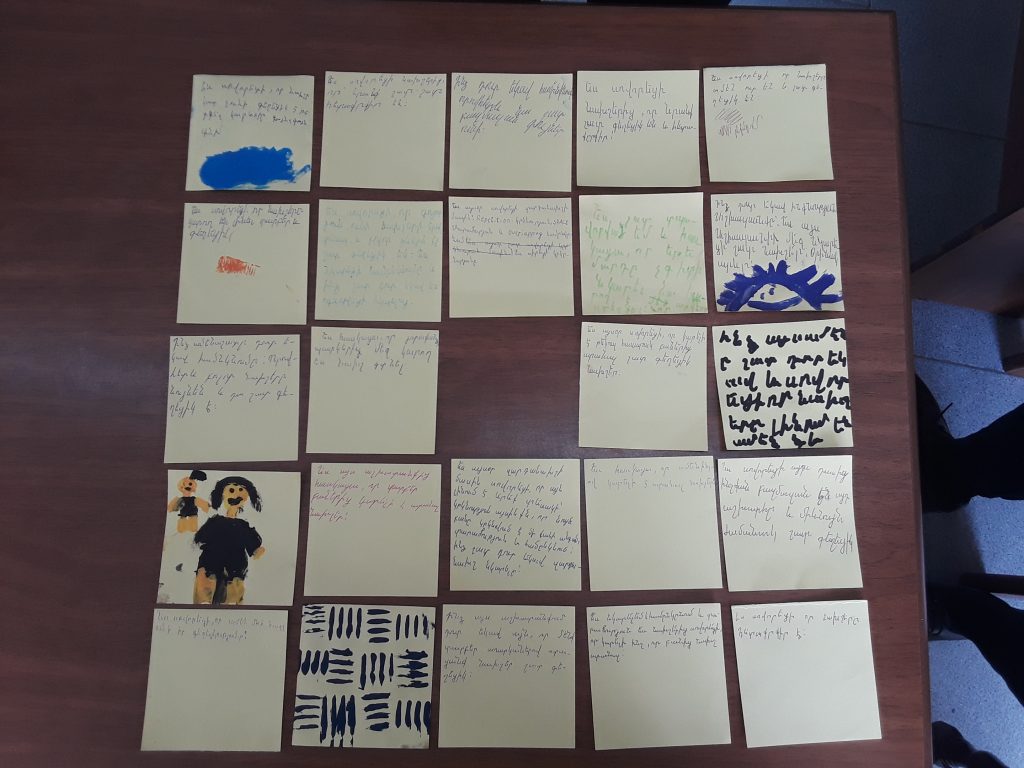
“City of plastic”
During our lessons the pupils will learn more about environmental issues. They will transform materials which are mostly used once such as plastic, paper or cardboard into a city made out of garbage.
After collecting cups, plastic bottles or plastic bags just in the surrounding of the Pedagogical University of Yerewan we realized how much garbage we cause.
The pupils are free to experiment in their group with different kind of techniques (cutting, stapling, glueing) to create a “city”. We want to re-value materials of everyday life. Our aim is to become more conscious of nature and our environment and to emphasize this during school.
Պլաստիկ քաղաք
Մեր դասի միջոցով երեխաները ավելի շատ բան կիմանան բնապահպանական խնդիրների մասին։
Նրանք կձևափոխեն այն նյութերը որոնք հիմնականում պլաստիկից , թղթից կամ պոլիէթիլենից են ու օգտագործվում են միայն մեկ անգամ ու դրանցից կստանան քաղաք՝ պատրաստված անպետք իրերից։
Միայն մանկավարժական համալսարանի շրջակայքից հավաքռլով թղթե բաժակները, պլաստիկ շշերև այլն, հասկացանք թե ինչքան աղբ ենք կուտակում։
Աշակերտներն ազատ են խմբերում փորձարկել տարբեր տեխնիկաներ՝ ստանալու համար քաղաքային պատկեր։
Մենք ուզում ենք վերաիմաստավորել կենցաղային իրերի արժեքը։ Մեր նպատակն է դառնալ ավելի գիտակից՝ բնության ու մեր շրջակայքի հանդեպ, և անել դա դպրոցի միջոցով։
Each pupil gets two pictures, which s/he has to combine to a collage. Like this the pupils add new elements to modify the meaning of the original pictures. They use different techniques like pencil-drawing, plasticine, pastel colours or fine-liners. The goal of this exercise is to work with existing pictures and set a new context for them. By filling in the gap the two pictures merge into one single work

Աշակերտներին տրվում է 2 նկար և նրանք պետք է միացնեն դա կոլաժի մեջ։ Նրանք ավելացնում են նոր տարրեր, որպեսզի նկարների իմաստը փոխեն կամ հարմարեցնեն մեկը մյուսին։ Դրա համար նրանք օգտագործում են գունավոր մատիտներ, պլաստիրին, գելային գրիչներ։ Այս վարժության նպատակն է նկարներով ստանալ նոր բովանդակություն։ Եվ վերջում երկու նկարների միավորումից ստանալ մեկ ամբողջական նկար։
© 2024 Art Matters
Theme by Anders Noren — Up ↑